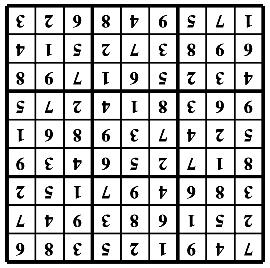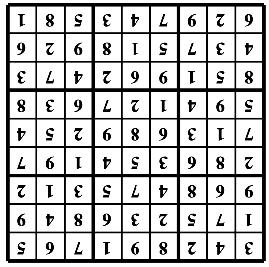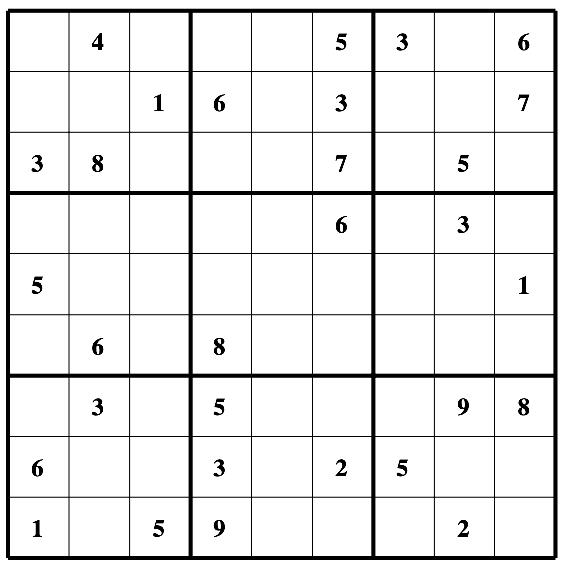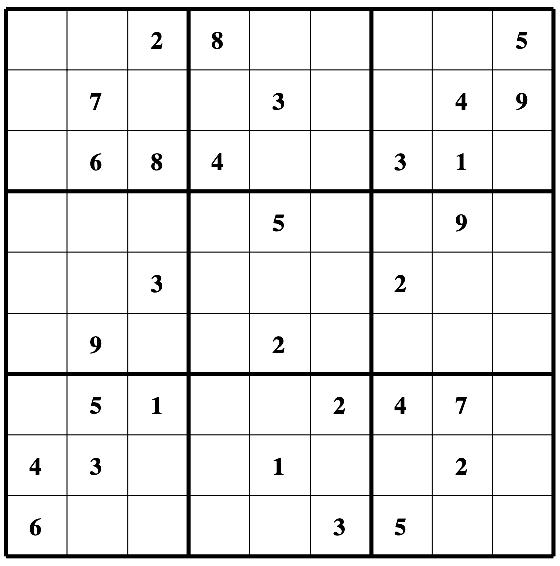IN-PERSON PANHELLENIC SORORITY RECRUITMENT RETURNS
Stevens hosts MLK Day of Service
BY KATIE BLOOMER, OUTREACH CHAIR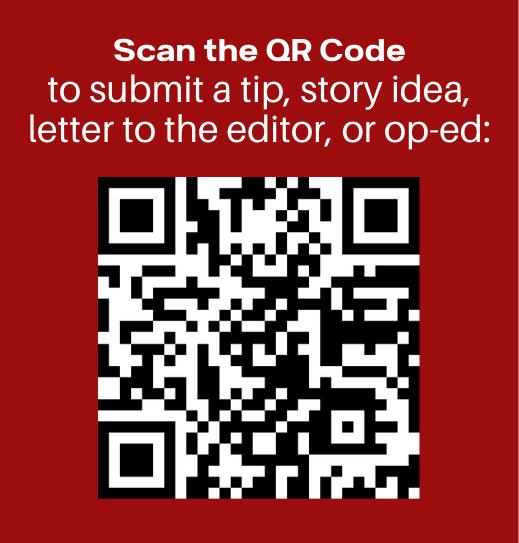
On January 17, the Office of Diversity, Equity & Inclusion, Office of the President, Division of Student Affairs, and Development and Alumni Engagement Office partnered for the second annual MLK Day of Service. This day is a federal holiday labeled by Congress as a “day on, not a day off,” referring to the importance of using the free time towards taking positive action for those in the community and beyond.
BY BENJAMIN KNOBLOCH, NEWS EDITORThe member organizations of the Stevens Panhellenic Council (SPC), an association of Stevens sororities represented by the National Panhellenic Conference, conducted their recruitment processes this month over the course of several days, the first one to be fully in-person since 2020.
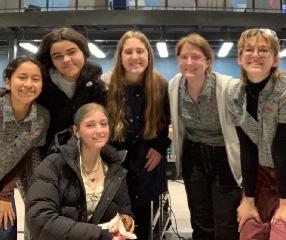
Ouckama appointed as new Associate Provost
BY EVAN PAPAGEORGE, STAFF WRITERThe administrative system at Stevens consists of different departments and offices working together to run the university. One of these departments is the Office of the Provost. The current Provost is Dr. Jianmin Qu. Provost Qu is “responsible for all academic departments, schools, colleges, and research centers” and “ensures that Stevens maintains the culture and deploys the human and physical infrastructure necessary to achieve its academic mission,” according to the Stevens website. Part of Provost Qu’s staff is the role of Associate Provost. The Associate Provost aids Provost Qu and his office in the school’s academic, financial, and strategic operations. As announced by Provost Qu on January 18, the position of Associate Provost will be held by Stevens’ own Maria ‘Sin’ Ouckama starting on March 1.
Ouckama will be taking
SEE PROVOST PAGE 2
The recruitment process for each sorority took place from January 15 to 18. Each day was dedicated to an event that aimed to showcase to potential new members, or PNMs, the culture, mission, and activities of each of the five sororities belonging to the SPC.
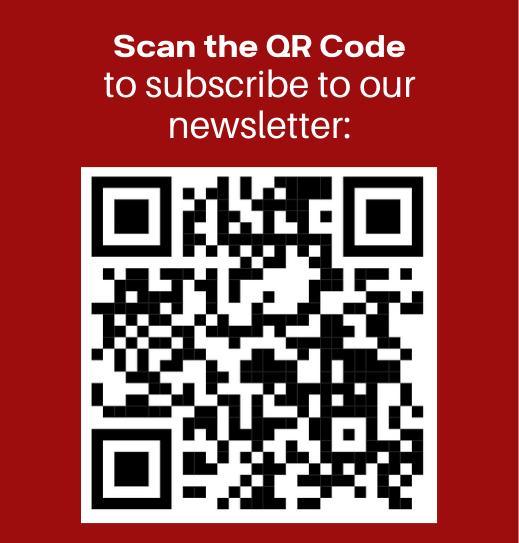
Since 1971, when women were first admitted to Stevens, the number of active sororities on campus has grown to seven, of which about 40% of female under-
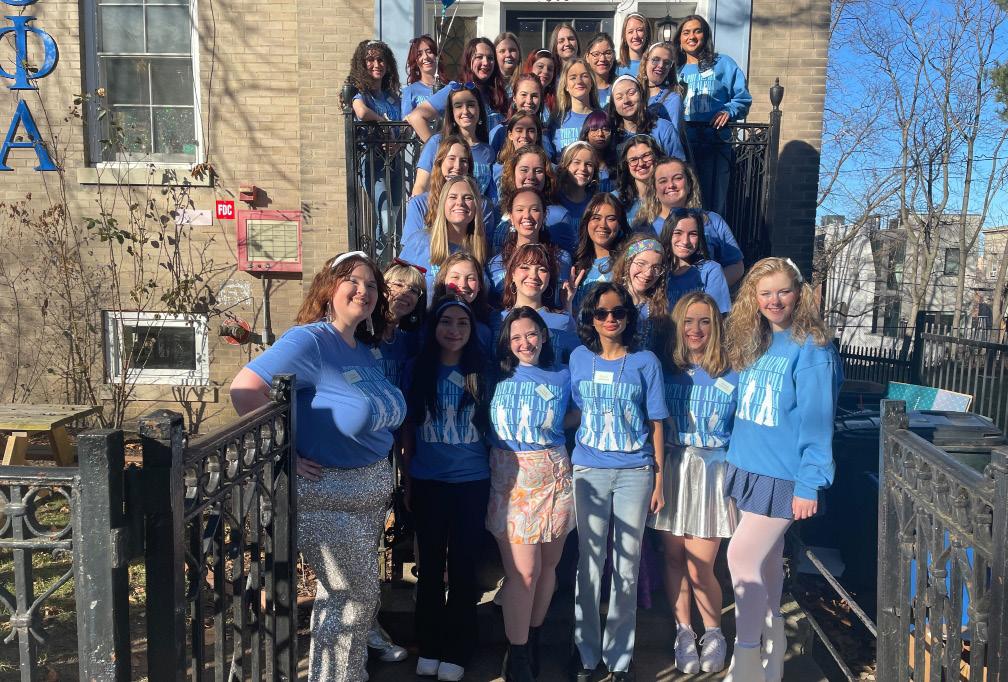
Stevens team earns top50 finish in Bloomberg’s Global Trading Challenge
BY EVAN PAPAGEORGE, STAFF WRITERBloomberg was founded in 1981 by many global leaders like Michael Bloomberg, the former mayor of New York City, and has since been at the forefront of financial technology and economic influence on a global level. Every year, Bloomberg hosts the Global Trading Challenge, a competition that requires university teams to invest virtual money into Bloomberg’s Terminal system. At the end of the competition period, the team with the best-performing investments wins. Out of the 1000 teams competing, the team from Stevens accomplished the feat of placing 20th in North America and 50th worldwide.
Stevens’ team for this year’s competition, selfdubbed “Slavic Inc.” to pay homage to the members’ ethnic identities, consisted
SEE GLOBAL PAGE 2
graduates now belong.
The first day saw the Round Robin phase of recruitment, where PNMs had the chance to meet and learn about the sororities in recruitment groups by traveling to stations prepared around campus. Each sorority hosted one location: Phi Sigma Sigma, Theta Phi Alpha, and Delta Phi Epsilon hosted their events in their respective houses, while Alpha Phi was stationed in the Bissinger
Room of the Howe Center and Sigma Delta Tau was in the Babbio Center. At the end of the day was the first round of selection, in which PNMs would gradually narrow their choices of sororities to join. On this first day, PNMs selected four sororities to rank as first choice and slotted one sorority as second choice.
Day two was the Philanthropy phase. The day was SEE SORORITY PAGE 3
The inagural Stevens women’s MakerSpace workshop
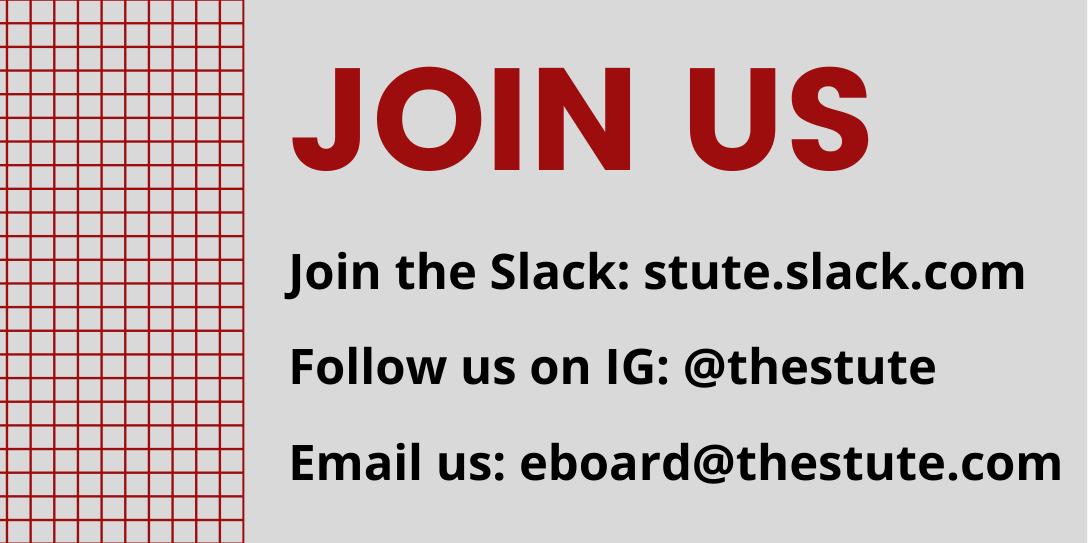 BY AVA WANG, CONTRIBUTOR
BY AVA WANG, CONTRIBUTOR
“70:30” has become a quip that Stevens students’ ears are trained to interpret as the current maleto-female gender ratio of the undergraduate student body. The business and engineering scenes tend to be male-dominated, and Sandra Clavijo, Director of Undergraduate Studies, recently made strides to close the gap. Stevens launched its MakerSpace facility in Spring 2021 as a resource for students to explore personal interests and collaborate on
academic projects. Located in ABS Engineering Center, the space contains a hobbyist’s essentials and an enthusiast’s gizmos galore. From automated tool cabinets to HoloLens headsets, the MakerSpace sandbox is only bounded by the ceiling of the user’s imagination. Since the space’s advent, membership has been dominated by male students and faculty. Taking note of this disparity, Clavijo reached out to the Director of the MakerCenter, Paul McClelland, who recruited a dedicated team of individuals to ful-
SEE MAKER PAGE 3
Stevens celebrated the day by inviting the student body, faculty, staff, and alumni for a complimentary breakfast with guest speaker Aisha Lawrey and student performances in the University Center Complex Tech Flex Auditorium. This was followed by an afternoon of various volunteering opportunities in Hoboken and Jersey City. Students then returned for an afternoon reception including the keynote speaker Tahesha Way as well as more performances.
The first speaker, Aisha Lawrey, is a STEM advocate and Stevens alumna. She focuses on increasing the presence of women and minorities in engineering. Lawrey currently works for Amazon Web Services to show pathways to becoming professionals in the cloud workforce. She spoke about her
childhood, education, and career as a Black woman. These stories connected to her passion for inspiring others and leading change. The second speaker was Tahesha Way, New Jersey’s 34th Secretary of State. She oversees the State Division of Electronics which ensures elections are conducted properly and everyone has access to voting. She spoke about empowering voters in the same way that MLK fought for the voiceless to have a voice. A step performance was also completed by members of Alpha Phi Alpha, the first intercollegiate Greek-letter fraternity established for African-American men in 1906. Between the introduction and reception, Stevens offered participants the choice between ten service opportunities. On campus, volunteers could write letters for hospice patients through Grace Healthcare services or senior community residents through Love for our Elders. Materials were provided and students learned about each organization while writing the letters. Donation collection drives were held for Round 2 Resources which collects women’s clothes and kitchen supplies, Garden State CDC which needs liquid HE laundry detergent, bath towels, twin sheets, and twin blankets, and the Boys and Girls Club of Hud-
Division of IT’s newly launched digital backpack to improve software resources at Stevens
 BY TANYA AVADIA, STAFF WRITER
BY TANYA AVADIA, STAFF WRITER
The Division of Information Technology at Stevens has recently launched a digital backpack to ease the technical needs of students returning back for the spring semester. The digital backpack contains information about all the tools students have at hand and all the resources Stevens provides to them during their time here. Access to the digital backpack is fairly simple as its page can be found on the Stevens website at https:// www.stevens.edu/tools/student-digital-backpack. The digital backpack can be very useful for students because it allows them to have access to a plethora of technologies that would aid their learning both on campus and more.
To unpack, the digital backpack is divided into three categories: Getting Started, Learning & Collaboration, and Resources. The Getting Started section is to help new ducks transition digitally to Stevens. It includes directions on how to set up the myStevens portal
and the Stevens email. Additionally, it also highlights the Stevens Laptop Purchase Program which allows students to buy laptops and supporting accessories from Dell and Apple at a discounted price. The Learning & Collaboration section outlines some of the tools students will need in the classroom setting and how to use them. How to use Canvas, Zoom, and Microsoft 365 is all explained thoroughly. The Learning & Collaboration section also houses the Stevens software store from which students can download specific software as per their needs. The last section, Resources, provides extra guidance on other technical matters such as how to print on campus and information on how to install a free antivirus software or use LastPass password manager. The digital backpack is a great resource for all students as it makes accessing IT-related information so much easier; therefore, students are surely due to visit the digital backpack several times on their journey at Stevens.
Masthead
Volume CXX No. 14
Executive Board
EDITOR-IN-CHIEF..............................SANJANA MADHU ‘23
BUSINESS MANAGER.......................JORDYN RAMELLI ‘23
MANAGING EDITOR............................. KEENAN YATES ‘24
LAYOUT EDITOR.........................................ISABELLA ZIV ‘24
OUTREACH CHAIR KATIE BLOOMER ‘25
DIGITAL MANAGER...............................BEMIN SHAKER ‘23
SECRETARY......................................ZANE THUMMBORST ‘23
Editorial Board
NEWS EDITOR.............................................OZ AGUINAGA ‘23
NEWS EDITOR.........................................BEN KNOBLOCH ‘25
FEATURE EDITOR..................................TASHA KHOSLA ‘25
SCIENCE EDITOR.........................................ERIN MCGEE ‘25
OPINION EDITOR.................................CLAIRE HANNAN ‘24
SPORTS EDITOR........................................CHRISTA RUIZ ‘25
HEAD COPY EDITOR.....................GIANNA CALLEGARI ‘24
ASSIS. COPY EDITOR ISABELLA HAMM ‘25
ASSIS. LAYOUT EDITOR................NICOLE GIARDINO ‘25
Operations Board
HEAD PHOTOGRAPHER......................OLOF PERSSON ‘25
ASSISTANT BUS. MANAGER..........AVA BUONCUORE ‘25
SOCIAL MEDIA MANAGER............VANESSA HUERTA ‘23
Staff & Contributors
Advait Dantuluri
Ava Wang
Charles Beall
Cole Gardelia
Ethan Kleschinsky
Evan Papageorge
Hima Thummala
Itai Geller
Joey Ames
John Horgan
2023 International Day of Women and Girls in Science
BY ASWIN AGUINAGA, NEWS EDITORThe Royal Academy of Science International Trust (RASIT) is excited to announce that they will be celebrating the International Day of Women and Girls in Science (IDWGIS) on Friday, February 10, 2023, at the United Nations Headquarters in New York City.
IDWGIS is an annual event that celebrates the achievements of women and girls in science and calls for greater gender equality in
MLK CONTINUED
FROM PAGE 1
son Country which wants new and lightly used books for middle and elementary school students. All three of these collection drives will continue accepting donations until January 31 for anyone who was not able to attend the event or did not bring their donations with them.
the field. By promoting the participation of women and girls in STEM fields, we can help to ensure that we have a diverse and well-educated workforce that can help to drive innovation and economic growth.
This event will provide a unique opportunity for attendees to participate in workshops at the United Nations, meet with global leaders, and visit NYC. Stevens students are particularly encouraged to attend this event as registration is currently open and will close on
January 31. Professional attire is required. Interested students can register by visiting this link: https://docs.google.com/ forms/d/e/1FAIpQLSfjkcuevDss5q9NPjqobcyU_9aXWcT3kZ8xGY0fzTCCeo8JLA/viewform.
Students interested in volunteering can sign up at this link: https://docs.google.com/ forms/d/e/1FAIpQLSdzNaxoIFsMC_oVEN-CPCwk5ZRoX8FeWbTzAEyteU4IESE0Iw/ viewform
Matthew Brantl
Nick Smith
Rafael Lee Li
Ruthie Mullisky
Stephen Pachucki
Tanishka Kapoor
Tanya Avadia
Victoria Yashchuk
Vitek Sabath
Zoe Hack
Corrections
Disclaimer
All opinions and editorials reflect the views of their respective author(s). No Part of The Stute may be reproduced in any form, in whole or in part, without the written consent of the Editor-in-Chief. Cited references of The Stute are permitted.
All members of the Stevens community are able to submit a Letter to the Editor to be published in The Stute. Letters must refer either to a piece published in The Stute or to The Stute in general and must be between 400 – 800 words in length. Submit letters to editor@thestute.com with your name and title (when applicable) or using our Google form. For writers who wish to write a Letter to the Editor anonymously, please see our policy on anonymity.
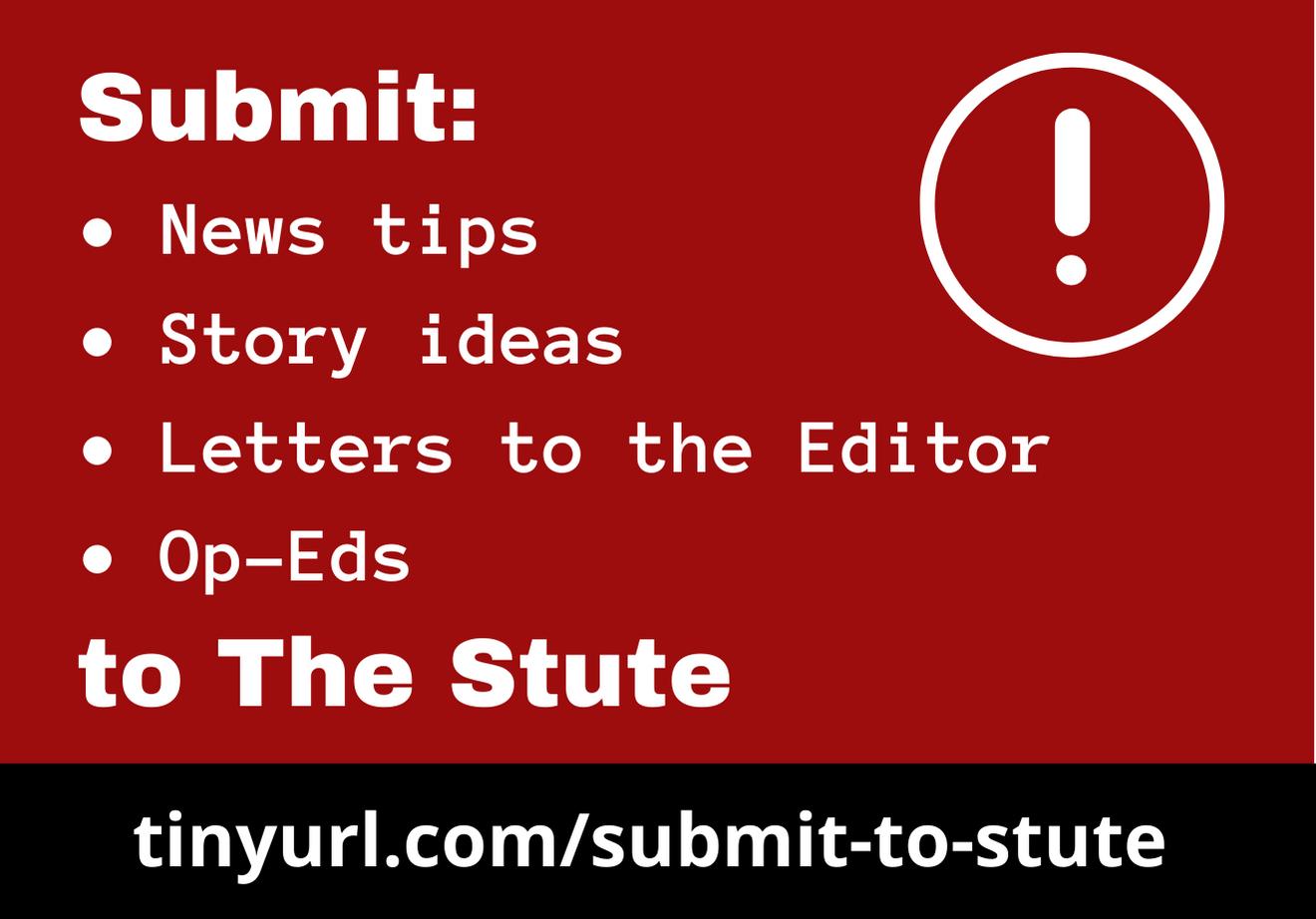
The Editorial Board reserves the right to choose whether or not to publish a submitted Letter to the Editor based on a majority rule vote, and additionally reserves the right to edit letters for clarity or request authors to revise. Provided that the author approves the final version, The Stute reserves the right to edit letters according to our copy editing procedures, defined in our policies.
All members of the Stevens community are able to submit a standalone opinion piece (otherwise known as an Op-Ed) to be published in The Stute. Op-Eds must be between 400 – 800 words, but longer submissions will be considered on a case-by-case basis. To submit an OpEd please email eboard@thestute.com with your name and title (when applicable) or using our Google form (tinyurl.com/submit-t0-stute). For writers who wish to write an Op-Ed anonymously, please see our policy on anonymity.
The Editorial Board reserves the right to choose whether or not to publish a submitted Op-Ed based on a majority rule vote, and additionally reserves the right to edit Op-Eds for clarity or request authors to revise. Provided that the author approves the final version, The Stute reserves the right to edit Op-Eds according to our copy editing procedures, defined in our policies.
Off-campus events included Lunchtime Ministries and the Hoboken Food Pantry which both provide food for those in need. The Hoboken Food Pantry also supplies supplemental hygiene products and pet supplies. Volunteers could also spend their time at the Hoboken Charter School or Elysian Charter School to do basic organization and overall provide support where needed. The last volunteer option was Computers 4 People which works to create a sustainable solution to the mass pollution of e-waste and the digital divide in New York City.
The MLK Day of Service aimed to encourage the student body, faculty, staff, and alumni to do service work on the day of service with the hope that they would continue their efforts afterward. Overall, the event was a success with more than 300 in-person and 68 virtual participants.
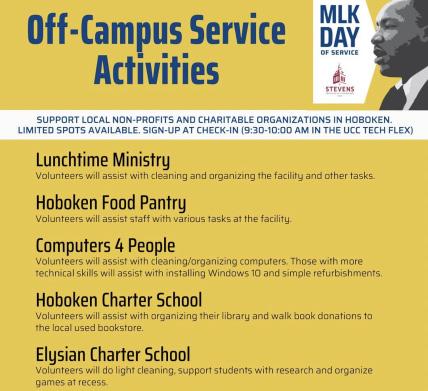
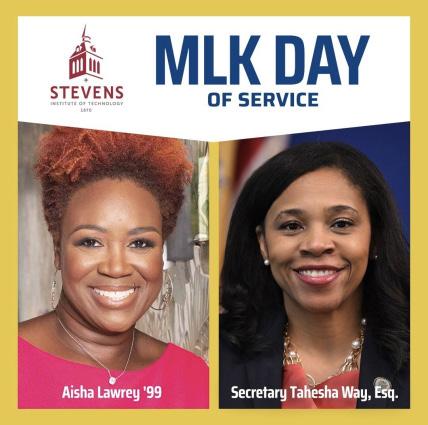
PROVOST
CONTINUED FROM PAGE 1
over the role of Associate Provost from Dr. Cindy Chin, who was appointed to the new position of Vice President for Enrollment Management by President Farvardin.
Ouckama started at Stevens in July 2017 as the Senior Director for Human Resources and Deputy Title IX Coordinator, leading the Division of Human Resources this past summer. Before being here at Stevens, Ouckama held many human resources positions in the public and private sectors, including a stint as
GLOBAL CONTINUED FROM PAGE 1
of Dmitiry Stepanyan ’24, Damian Lech ’24, Adam Moszczynski ’25. Stepanyan and Lech attended high school together and are neighbors with Moszczynski in Hoboken. As members of the Stevens Student Managed Investment Fund (SSMIF), the team has experience with investments, the technology of the financial world, and the skills needed to succeed in a fast-paced, competitive investment environment.
The competition took place over four weeks. Working in the state-ofthe-art Hanlon Financial Systems Center at Stevens, Slavic Inc. used Bloomberg Terminal to make and monitor investments and saw their ranking on Bloomberg’s weekly up-
MAKER
CONTINUED FROM PAGE 1
fill Clavijo’s vision. The inaugural Women’s MakerSpace workshop took place on November 17, 2022. This historic workshop was led by civil engineering student and machine shop employee Lily Stevenson ’23, with support from fellow machine shop employees Nataly Jimenez ’26 and Alicia Kearney ’26, who study computer science and mechanical engineering, respec
COURTESY OF @STEVENSSTUDENTS AND @FOLLOWSTEVENS ON INSTAGRAM
a combat medic in the United States Army National Guard from 20062012. Ouckama earned a bachelor’s degree in Economics, International Relations, and Policy Studies from Syracuse University, and is currently pursuing an Executive MBA at the Stevens School of Business.
The Stute interviewed Ouckama to learn more about being appointed to such a prestigious position. She said, “I am grateful that the institution valued not just my extensive experience in process efficiencies, project management and strategy formulation prior to joining Stevens, but also my years with Stevens serving our faculty and staff as part of the Division of
dates trend upwards. Within the competition, the team had limits on time and the investment types they were allowed to make. The team could only take long positions in stocks, which mirror the levels of Wall Street stocks. During the competition, there was a downturn in the market, making the challenge even greater. Slavic Inc. used macroeconomic data to predict trends and make their investments in the best way possible. It was a system that paid off, as the team beat the market and surpassed control data by 5%.
One way the team achieved such success in the competition was the compartmentalization of their team. While others worked together on each investment, Slavic Inc. let each member make their own decisions, simulating three firms operating under the same name.
tively.
Stevenson led the five workshop attendees through a guided tour of the MakerSpace before diving into in-depth tutorials on available equipment. While many of the existing members of the MakerSpace utilize the location as a prime spot to score some extra time on the 3D printers for academic projects, Stevenson urges members—new and old—to embrace creativity beyond the classroom. Stevenson has a second, larger event in the works, with hopes of
Human Resources.” When asked what some of her plans as Associate Provost are, she responded that she hopes to continue her work from the Division of Human Resource of “providing efficient processes, a high quality of support to our faculty and staff” and “to affect similar changes more broadly to make a positive impact on our students’ experiences.”
Looking back at her career and work here at Stevens, Ouckama’s experience and expertise across varying work will help her succeed and further Stevens’ great legacy. For more information, please see Provost Qu’s email from January 18.
Each team member used a unique combination of skills taught in their classes. Moszczynski said, “My strategy came from SMIF and from everything I learned in the last year [...] I just threw it all together.” Slavic Inc.’s advisor was Dr. Donald Lombardi, a teaching professor at the School of Business. Lombardi offered support and encouragement throughout the competition period, but the work was done primarily by the students. Lombardi praised the team: “Whether it is in classroom discourse or while changing trains through Secaucus Junction, these three gentlemen have an unrelenting thirst for knowledge and an integrity that serves them well in all they do at Castle Point, including this competition [...] Those qualities, along with their financial acumen, will be unquestionable assets in their careers.”
expanding the attendee list to 1520 individuals. The event is slated to cover more intensive machinery, such as 3D printers and brand new laser cutters. Keep an eye on the Women’s MakerSpace Workshops in Spring 2023. Stevens undergraduate and graduate students, as well as faculty and staff, are all eligible to become Makerspace members and can gain DuckCard swipe access to the automated toolboxes following the successful completion of a 20-question safety quiz.
SORORITY
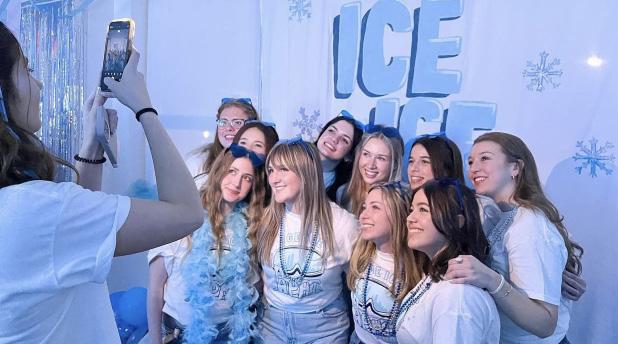
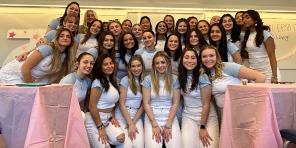
CONTINUED FROM PAGE 1
dedicated to teaching PNMs about each sorority’s philanthropic causes: Phi Sigma Sigma partners with the Kids in Need Foundation to support education and college preparation for American children; Theta Phi Alpha provides aid, home building, and neighborhood revitalization projects to improve the lives of the homeless and provides material and spiritual assistance to residents of rural Appalachia; Delta Phi Epsilon supports the Anorexia Nervosa and Associated Disorders organization and the Cystic Fibrosis Foundation to help combat eat disorders and cystic fibrosis, respectively; Alpha Phi aims to support and raise awareness for women’s heart health; and Sigma Delta Tau partners with Prevent Child Abuse America (PCAA), the American Foundation for Suicide Prevention (AFSP), and Jewish Women International (JWI), and operates a self-named Foundation that provides scholarship opportunities and educational programs to sisters. The day culminated in the next round of selection, with PNMs now ranking only two of their remaining sororities as first choice, another as second choice, and the final one as third choice.
The third day, or “preference day,” saw PNMs attending a preference ceremony for each of one or
two remaining sororities returned to them based on their previously indicated selections. These ceremonies are a kind of formal ritual where sororities aim to communicate their unique meanings and forge deeper connections with prospective members. At the end of “pref day,” the final round of selection consists of PNMs choosing a single preferred sorority.
Each PNM then receives a bid, or a formal invitation to a sorority, which is revealed on the fourth day, or Bid Day. The Bid Day celebration took place in the Bissinger Room this year, but only 20 members from each sorority could attend due to capacity limits. The celebration consisted of the invitation announcements as well as the “welcoming home” of sisters who volunteered as recruitment counselors (RCs) or Panhellenic Council delegates. According to Keenan Yates, a sister belonging to Sigma Delta Tau, this celebration was particularly special because RCs and Panhellenic Council delegates are not allowed to reveal an affiliation with any sorority during the recruitment process because of bias concerns.
“It was the first in-person recruitment event I’ve been able to experience since joining Sigma Delta Tau in the spring of 2022,” Yates said. “I’m so thankful to have been a part of recruitment this year. It was an awesome experience and I’m so excited to meet our new Lambda class!”
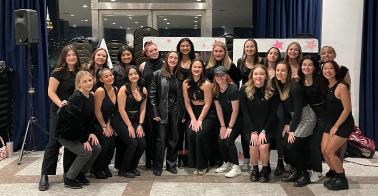
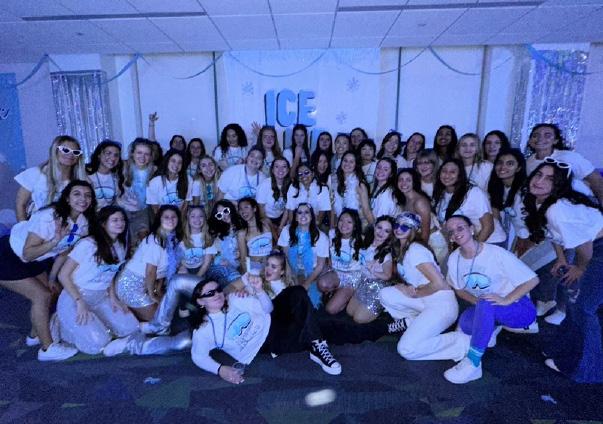
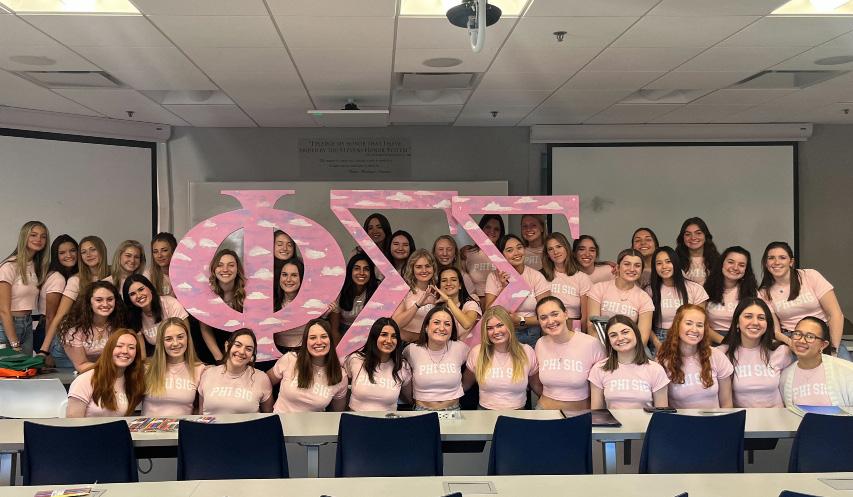
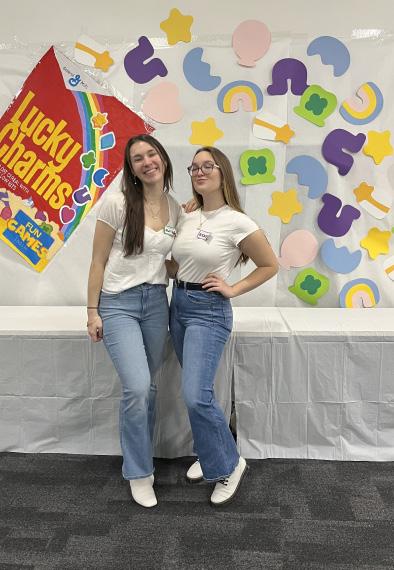
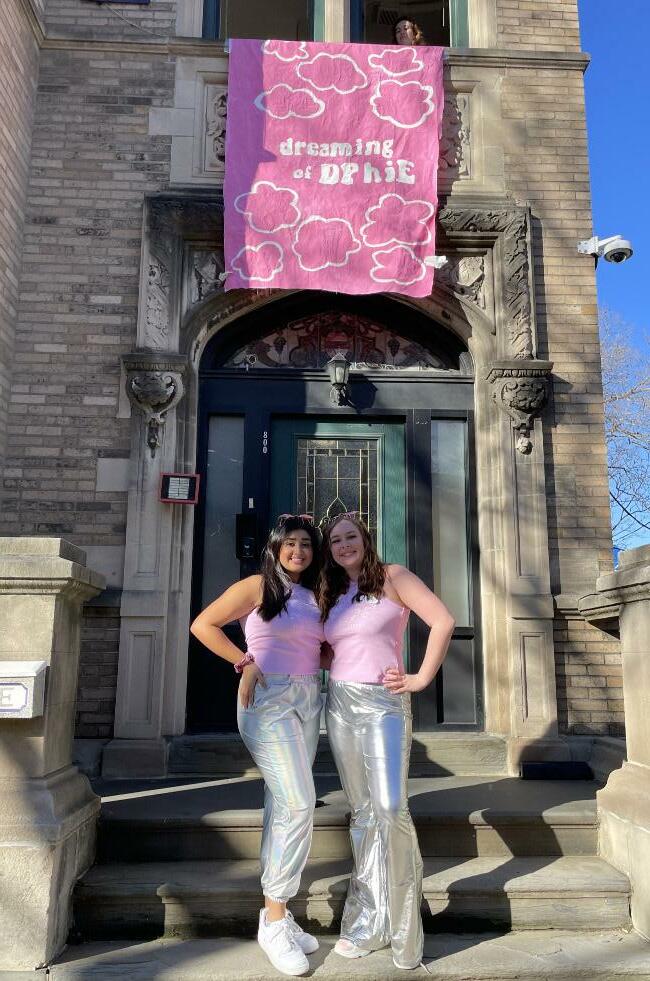
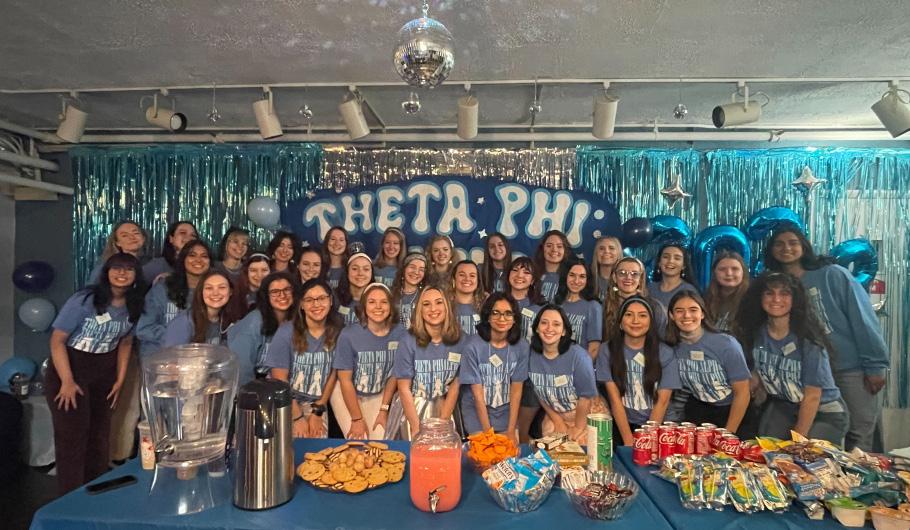
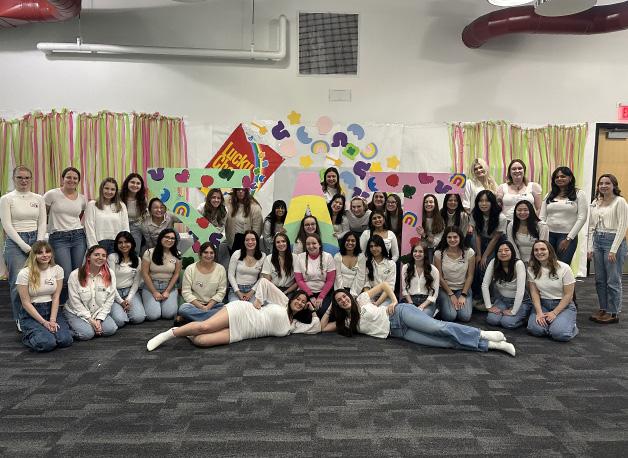

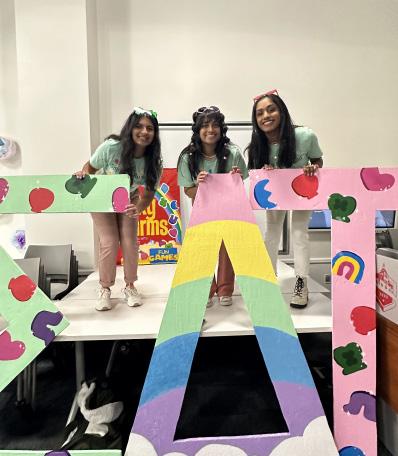
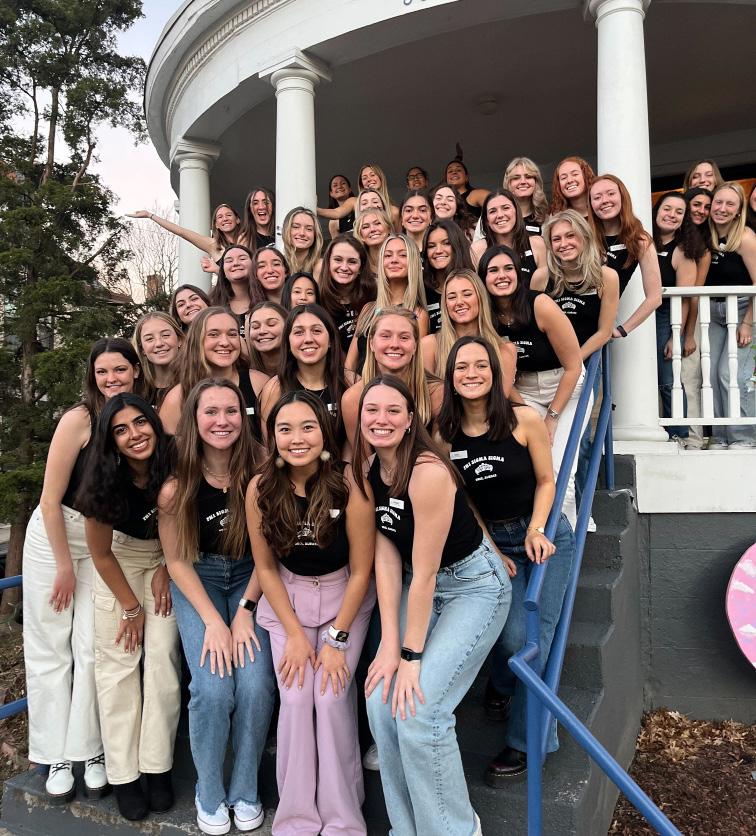
MENTAL WELLNESS MONTH - JANUARY
Mental wellness vs. mental health
BY ASWIN AGUINAGA, NEWS EDITORIt’s a new year. January is most often associated with new beginnings, where after weeks of hectic holidays, relaxing vacations, and quiet reflections, people are rejuvenated and ready to achieve their resolutions. January is also Mental Wellness Month — so before you start working on any new goals or habits, here is the difference between mental wellness and mental health.
The public is quick to make the mistake of thinking that mental wellness and mental health are synonymous, yet we should avoid conflating the two. There are obvious differences. The Global Wellness Institute defines mental wellness as “a dynamic, renewable, and positive resource, and as an active process that requires initiative and conscious ac-
tion. It recognizes mental wellness as an internal experience that encompasses multiple dimensions.” Put another way, mental wellness encompasses a range of activities, mental or otherwise, that contribute to your overall well-being and personal satisfaction. Even then, there is nuance to the concept. It is not strictly a continuum of happiness with one end being happy and the other end depressed. Mental wellness can be practiced through activities that are mostly benign such as bathing, getting a massage, listening to music, going out, and socializing. All of these activities are taken for granted but do wonders for your overall mental wellness. Included in mental wellness is mental health. Mental health still contributes to a person’s overall well-being. A lack of mental illness does not equate to mental wellness. About 15%
of the world’s population suffers from a diagnosed mental or substance use disorder, but that does not mean that the other 85% of the population is “mentally well” or leading healthy, happy, productive, and satisfied lives.
Growing awareness has destigmatized mental illnesses to some degree. There are still many who deny that they exist or that they could possibly have one. This has been changing as governments and institutions have been realizing the importance of providing resources to those who suffer from mental illnesses. According to the 2022 Employee Wellness Industry Trends Report by Wellable Labs, 76% of companies are investing more in stress management and resilience resources for their team members, all of which can be used for work situations as well as in their personal lives.
So then, how do we achieve mental wellness? Mental wellness isn’t something you achieve, it is a process, it is the cumulative effort and actions we take that will contribute to our overall well-being, whether or not you have a mental illness or not. Dr. Robert Waldinger, Director of the Harvard Study of Adult Development—the world’s longest-running study on human happiness—said “the people who have the warmest relationships and the people who are most connected to other people in their lives are the people who stay healthier and live longer.” If you are to have any resolution for the new year, it should be to take care of yourself, and most importantly, to build those deep connections with family and friends — you’ll thank yourself later.
Ways to build mental wellness
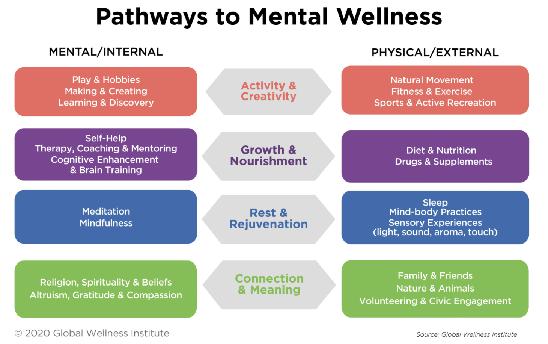 BY ADVAIT DANTULURI, STAFF WRITER
BY ADVAIT DANTULURI, STAFF WRITER
In college, many of us can struggle with our own mental wellness due to various factors such as stress or anxiety. As January is the month of mental wellness, here are some helpful tips from Psychology Today to better build your mental wellness:
Taking Good Care of Yourself
One of the best ways to improve your mental wellness is by taking care of your own body. Exercising for at least 30 minutes a day for most of the week is a good way to do that. The University Center Complex (UCC) Fitness Center is a great place to start at Stevens. In addition, eating foods such as fruits, vegetables, and healthy
fats (avocados, nuts, and olive oil) and limiting foods that are processed or contain simple sugar is vital to taking good care of yourself. (If you struggle with anxiety, eat several small meals instead of a few big meals as drastic changes in blood sugar make you more nervous). Also, limit taking mind-altering substances such as caffeine and especially alcohol and drugs, as they can change how your mind works and will increase your anxiety and depression slowly over time. Sleep is also important: be sure to get at least seven to nine hours every night to better refresh your mind.
Connecting With Others
Isolation is a cause and symptom of mental illness, so connecting with others is a surefire way to improve your mental well-being. You can try
joining a club of people with similar interests to yours, and be sure to engage with people, even if it’s someone you haven’t spoken to in a while. There are plenty of clubs and events on campus to go to which will help you meet new people. (Of course, it should be noted that hanging out with toxic people can often hurt your own mental wellness, and it’s important to leave those people in order to better your own mental well-being). In addition, showing gratitude and giving to others is another great way to lower stress, anxiety, and depression as well as broaden your own viewpoint on life in general. So, go out of your way to make new friends and be kind to others.
Positive Thinking
In addition to being kind to others, you should also be kind
to yourself. Practice self-compassion by learning to forgive yourself as well as acknowledge that you are doing your best. You should challenge negative thoughts by trying to stick to the positive. While it’s okay to sometimes feel sad or angry in order to better process your emotions or a situation, delving too much into negative feelings such as sadness and anger can destroy your life and your mental well-being. Practicing mindfulness, and sometimes praying (you don’t have to be religious to pray) can also help as well.
Setting Goals For Yourself
Setting goals for yourself can also improve your well-being, as slowly, over time you can build your self-confidence. Take control of your life, as those that have a degree of control over their life have more
happiness in general.
Getting Help When You Need It
It is never wrong to go to a doctor or therapist to improve your mental health, especially if you have suicidal thoughts, psychosis (seeing/hearing things that other’s cannot see/ hear), cannot function, have a history of serious mental illness, or when you aren’t successful in your own self-care. It should be noted that in some cultures, therapy is stigmatized, though those stigmas are wrong and you should seek help from professionals when you need it. Sometimes, mental illnesses are brought on by biological factors that can never change despite self-care and other habits, though that doesn’t mean that your mental well-being can never improve.
THE PUBLIC IS QUICK TO MAKE THE MISTAKE OF THINKING THAT MENTAL WELLNESS AND MENTAL HEALTH ARE SYNONYMOUS, YET WE SHOULD AVOID CONFLICTING THE TWO.”GRAPHIC COURTESY OF GLOBAL WELLNESS INSTITUTE
Men’s volleyball staying strong this season
BY TASHA KHOSLA, FEATURES EDITOROn Sunday, January 15 in Patchogue, New York, the Stevens men’s volleyball team defeated St. John Fisher University and St. Joseph’s College of Long Island during a tri-match at the Danzi Athletic Center, hosted by St. Joseph’s. The team beat St. John Fisher University across four sets at a margin of 19-25, 25-13, 25-12, and 25-18, and swept St. Joseph’s at margins of 25-19, 25-21, and 2522 for each match.
Although the volleyball team lost one of their recent matches due to multiple players being injured, there is no doubt that the No. 4 men’s volleyball team is still off to a strong start after their record-breaking season.
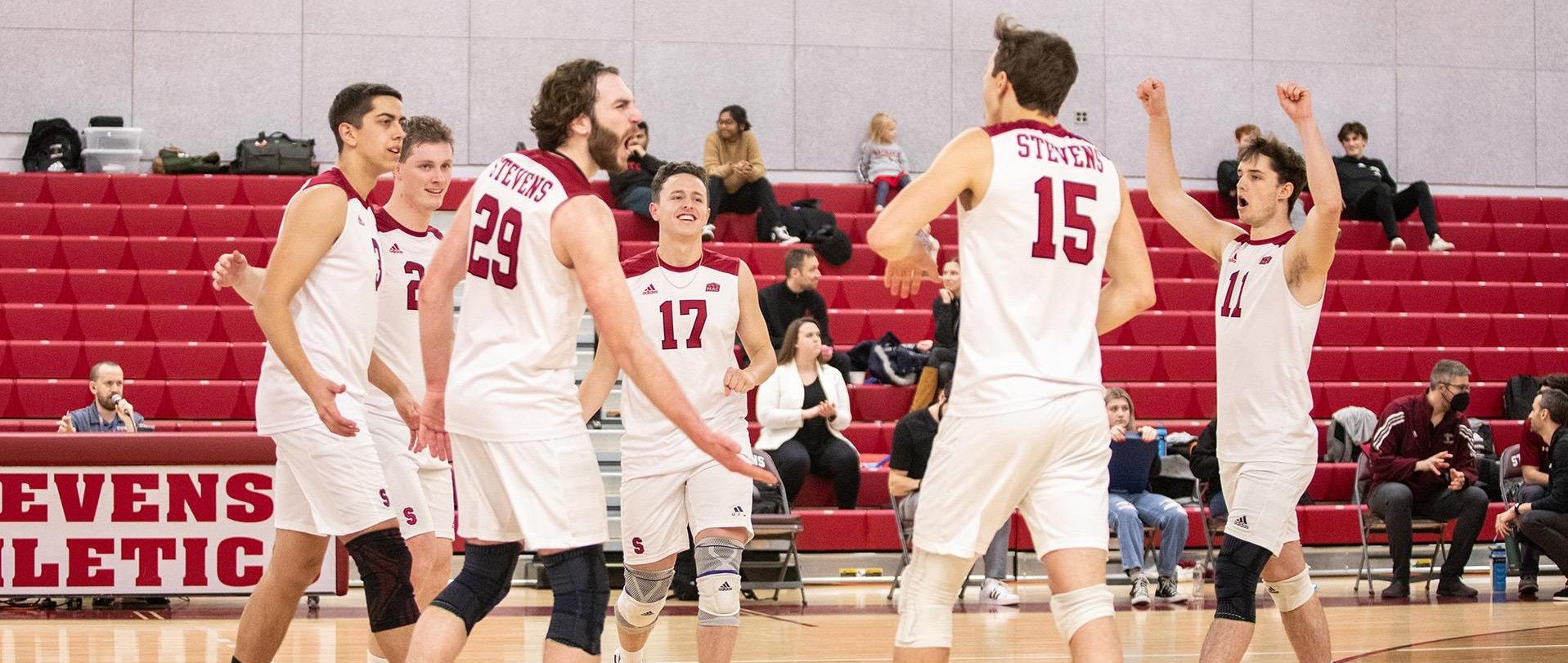
During the game at the Danzi Athletic Center, the men’s volleyball team had some impressive
plays, including senior Percy Bickford’s 27 total kills across the two matches, first year Phillip Bone’s 10 kills and eight digs against the Cardinals, and sophomore Koby Sherman’s seven kills. Another impressive highlight of the match was junior Phu-Quy Ho’s career-high of 10 digs in the Ducks’ sweep against St. Joseph’s. This is particularly impressive since this marks the fourth time across five seasons that the Ducks have opened the schedule with at least three straight wins.
Moreover, Bickford was “outstanding” in the victory over the Cardinals, as he had 14 kills on 18 swings with just one error, giving him a .722 hitting percentage for the match. He also had three kills in the first and fourth set and four in both the second and third sets.
Although St. John Fisher University won the opening set (.435 hitting percentage), the Men’s Vol-
leyball forced them into 19 kills and 18 errors across the other three sets. Additionally, the team increased their attack percentage in the second and third sets, and they worked up to a .435 hitting percentage in the third set.
After being down 0-1 from the first set, senior Christopher Varseveld was able to put the Ducks on the board. This then sparked a 5-1 run that gave the Ducks a 5-2 lead. Throughout the rest of the match, the Ducks maintained their lead, and a 7-0 run pushed the lead to 21-10, and the frame was closed out after a Ducks’ 4-0 run.
During the final set, the Ducks went on a five-point run and closed out the victory by scoring four of the final five points. Additionally, during the match against St. Joseph’s, the Ducks had a matchhigh of .393 in the opening set. Although the Golden Eagles won the first point of the match, Stevens
went on a 7-1 run to take control of the set. Bone and Sherman recorded two kills during that stretch and the Ducks never looked back.
A four-point swing pushed the lead to 21-16, and a kill from Varseveld and an error from St. Joe’s closed out the set.
As for the second set, Stevens had an early lead and was able to hold a slim lead throughout the frame. During the final set, the lead was pushed to 23-18. An ace from sophomore Hunter Schmidt closed out the sweep.
Since this match, Men’s Volleyball took a loss against Sacred Heart University at a margin of 2-3. The team also won both of their matches in the Stevens TriMatch, sweeping both No. 5 Vassar College and Elms College. The team’s next match is January 28 at 2 p.m. against No. 2 Springfield College in the Canavan Arena.
Four athletes receive Player of the Week honors
BY RUTHIE MULLISKY, SPORTS WRITERFor the week of January 16, there were a number of ducks who received recognition at a higher level for their athletic achievements. Among them were Percy Bickford (Men’s Volleyball), Jess Broad (Women’s Basketball), Kyle Slendorn (Wrestling), and Kristen Williams (Women’s Track and Field).
Senior Percy Bickford was named the American Volleyball Coaches Association (AVCA) Division III Men’s Volleyball National Player of the Week. This accomplishment marks Bickford’s first national recognition and makes it
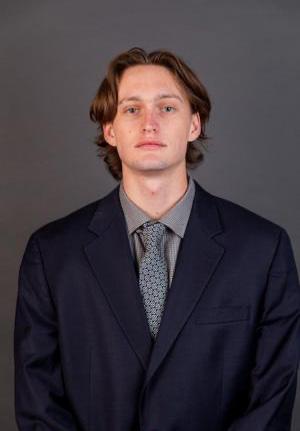
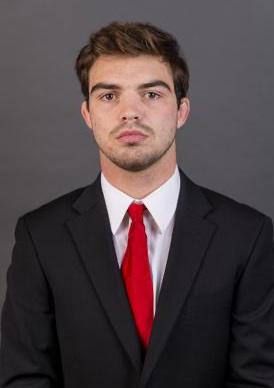
the program’s 14th, with Bickford being the tenth person in program history to receive the recognition.
Bickford contributed to the Ducks’ wins against Marymount University, St. John Fisher University, and St. Joseph’s College with his strong performances, including 31 kills on 52 attacks with only five errors.
Another Player of the Week honor came from the women’s basketball team. Graduate student Jess Broad was selected to D3Hoops’ Women’s Basketball Team of the Week for the first time in her career. This makes her the third person in program history to receive the recognition. Additionally, she was named the Middle Atlantic Conference (MAC) Free-
dom Player of the Week for the second time. These recognitions follow her impressive performances against Arcadia University and Lycoming College, in which she amassed 51 points, 14 rebounds, 10 steals, seven assists, and five blocks across both games.
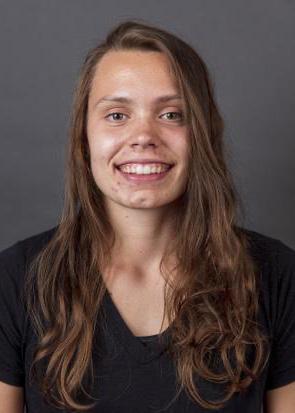
Another standout was highlighted in the wrestling team. Senior Kyle Slendhorn was named MAC Wrestler of the Week, marking his second career recognition of the honor. Slendorn also received a consecutive MAC Wrestler of the Week recognition for the week of January 23. At the Budd Whitehill Duals in Williamsport, PA, he took the 141-pound individual title and went undefeated in each of his four matches. In the
MAC Championships, Slendorn had three straight pins to reach the championship bout, where he then posted a 16-6 major decision to win his third MAC title.
Finally, another impressive performance was recognized in the women’s track and field team. Senior Kristen Williams was named MAC Indoor Track Athlete of the Week. This milestone is the first for Williams. At the Alvernia Winter Invite, she set a new personal record and won the 60-meter hurdles in a time of 9.17 seconds. Additionally, she also competed in the 200-meter dash, in which she placed 11th with a time of 29.29 seconds.
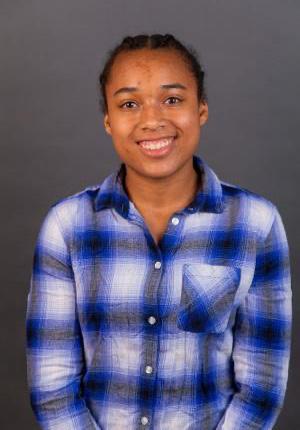
MEN’S VOLLEYBALL
6 p.m.
WRESTLING vs New York Univeristy Hoboken, NJ 7 p.m.
SUN, JAN 29
WRESTLING
JWU Wildcat Open Providence, RI Time TBD
MEN’S FENCING
Eric Sollee Invitational Cambridge, MA 9 a.m.
WOMEN’S FENCING
Eric Sollee Invitational Cambridge, MA 9 a.m.
TUE, JAN 31
MEN’S VOLLEYBALL vs Baruch College Hoboken, NJ 7 p.m.
WED, FEB 1
MEN’S BASKETBALL vs FDU-Florham Hoboken, NJ 6 p.m.
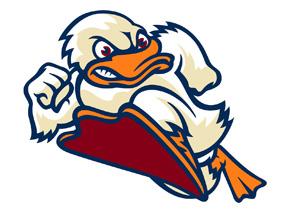
MEN’S VOLLEYBALL vs New Jersey City Univeristy Jersey City, NJ 7 p.m.
WOMEN’S BASKETBALL vs FDU-Florham Hoboken, NJ 8 p.m.
STEVENS SCOREBOARD
Nuclear fusion breakthrough and the future of energy
BY EVAN PAPAGEORGE, OPINION COLUMNISTThe scientific world has recently been launched into a frenzy as perhaps the most revolutionary breakthrough in technology and science since the introduction of computers. In a lab in California, west of San Francisco, scientists and engineers recently were able to harness the power of the stars. After nearly 75 years of trying, the scientists achieved controlled nuclear fusion. However, it was only for a billionth of a second in a laboratory, but it is the first step into the future of energy. If scientists can commercialize nuclear fusion energy, it would be an infinite energy source with no waste, no greenhouse emissions, and just clean energy.
In the 1930s, scientists began understanding more about the atom and nuclear energy. Discoveries and new technology revealed that within the bonds of an atom’s nucleus, there is an immense amount of stored energy. Perhaps the most famous example of this early understanding of nuclear energy is the Manhattan Project, the Trinity Test, and the first atomic bombs dropped in Japan on the cities of Hiroshima and Nagasaki.
Scientists like J. Robert Oppenheimer at Los Alamos, New Mexico, were able to harness nuclear fission, which is different from fusion. Fusion combines atoms and releases energy — fission breaks apart the nuclei of atoms. The first examples of fusion came in the 1950s with the development of a hydrogen bomb. Although never used in combat, it is much more destructive than atomic bombs with its use of a nuclear fusion of hydrogen atoms.
For most of the end of the 20th century, nuclear power plants globally used nuclear fission to produce energy. However, even though they did not release any greenhouse gasses, they have the potential to melt down and explode or emit radioactive waste. Nuclear fusion would not have any of these risks while also being a clean energy source. With the growing climate crisis, an infinite clean energy source like fusion could stop and reverse the damage of climate change at lightning speeds.
The fusion reaction was in the U.S. Department of Energy’s Lawrence Livermore National Laboratory (LLNL). The LLNL houses the energetic lasers, built in the 1990s to create intense environments typical of the center of stars and
super-sized planets. The project working on fusion, The National Ignition Facility (NIF), has attempted to reach controlled nuclear fusion 200 times in the past 13 years. On December 5, 2022, the laboratory fired the laser and caused atoms to fuse. It took 192 of the most powerful lasers on Earth, but the lab used the fusion of the nuclei of atoms and produced 50% more energy than was used. The director of NIF, Dr. Tammy Ma, says, “It was hotter than the center of the sun. We [LLNL] were able to achieve temperatures that were the hottest in the entire solar system”.
The prospects of controlled nuclear fusion energy are immense. It could lower energy bills to nearly nothing while nearly completely erasing the carbon footprint of most of the world. Although in very infant stages, the work of LLNL is the baby steps in a revolution that will change the world. Dr. Kim Budil, the director of LLNL, likens the breakthrough to the first flight by the Wright brothers saying, “it really is a remarkable feeling after working for 60 years to get to this point to have first-- taken that first flight”.
Hidden motivation
BY NICK SMITH, STAFF WRITER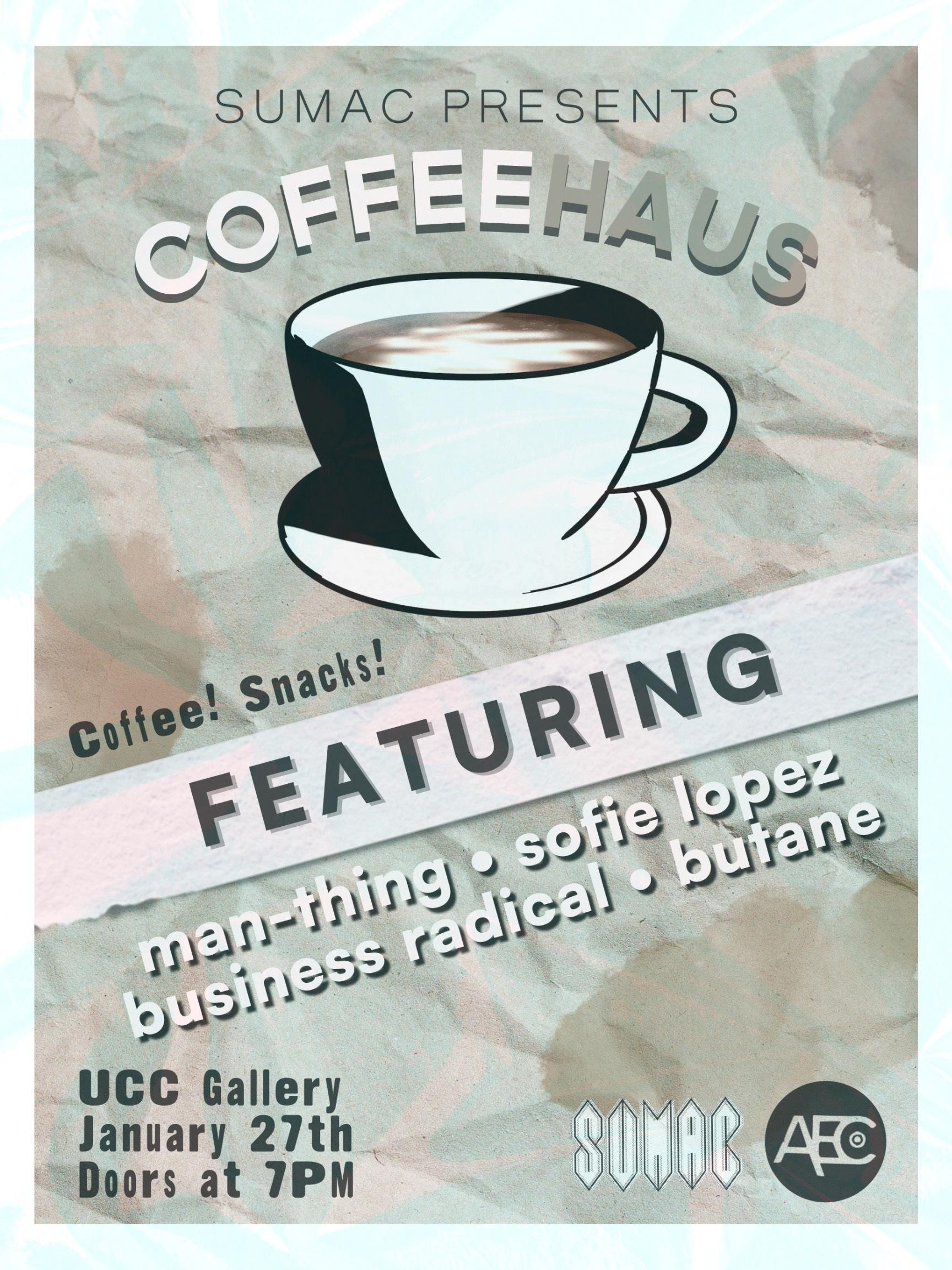

There is a famously notorious statistic regarding how poorly we keep our fitness-related New Year’s resolutions. At the beginning of every year, gym memberships are up around fifteen percent and by the end of the year, new members are in the negatives as more people bail on their newly minted aims for the year. Like many, we start off the New Year with our list of resolutions and goals for the upcoming year. However, few of us follow through with these goals. A poll done by the Society for Personality and Social Psychology found that roughly 41% of Americans consistently make New Year’s resolutions. Of those that make New Year’s resolutions, only 9% feel they were successful in fulfilling their goal for the year.
So why are we so disjointed from what we want to do and what we actually do? This does not uniquely speak to just New Year’s resolutions, think back to anytime you have made a goal and not succeeded in upholding that goal. Where did we fall short?
There are plenty of reasons people do not achieve their goals: we make goals our chores, we do not set the proper incentives, or we lack the motivation both internally and from others to succeed.
There is ample literature on what people can do to change their habits to set successful goals. One book that stands out is Atomic Habits, by James Clear. But what I would like to uniquely focus on is how we can learn from our past failures to set more effective and achievable goals for the future. We tend to make the same goals and fail to succeed again and again. For instance, 44% of people set out to lose weight nearly every year, and 34% of those people do not succeed in doing so. So what can that 34% of people learn from their past failures and how can we use that to make more effective and successful goals? Let’s take Oliver for example. Oliver is one of the 34% of people who year over year cannot seem to lose
weight after numerous attempts. Although Oliver has been unsuccessful in achieving his goals, he is likely quite knowledgeable about weight loss given all of his efforts. Despite his lackluster results, Oliver could be practically an expert at that point in weight loss.
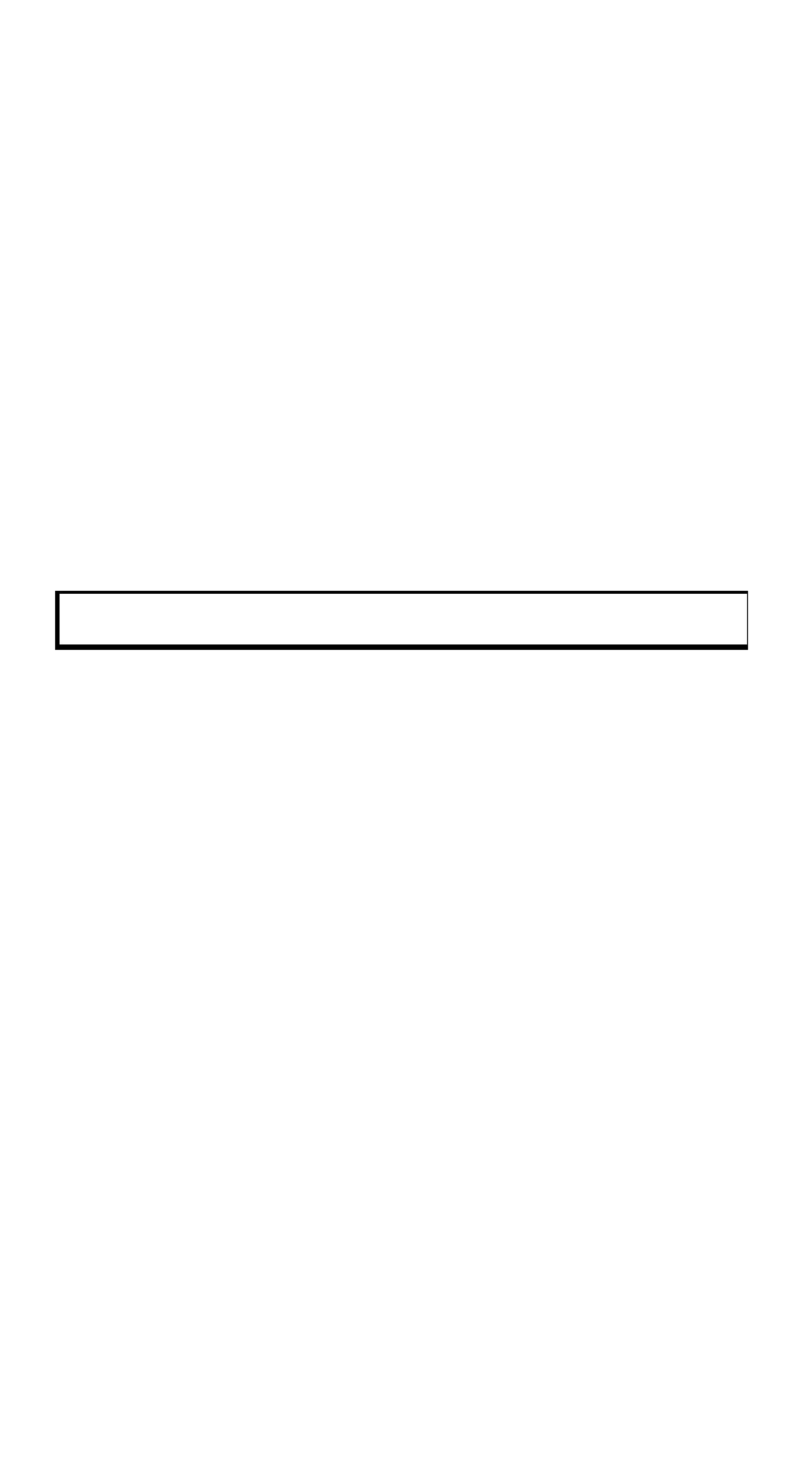
Researcher and bestselling author Aylet Fishbach says “people don’t recognize the knowledge they’re gaining as they struggle”. We all have worked endlessly to attain a goal that never seems to be achieved, but what we often fail to realize is just because we may have not been successful with our own goals does not mean that we lack the knowledge to achieve them.
What we can do with that knowledge is even more powerful as well. Research from Angela Duckworth and Fishbach showed that when we use our knowledge to teach others about what we have learned we are even more motivated than we receive advice. For instance, if Oliver decided to give weight loss advice to a friend with a similar goal he is more likely to buckle down and start eating a healthier diet than before. “Strugglers who gave advice, compared with those who received expert advice, were more motivated” to achieve their goals.
Hillary Clinton in 2008 lost the democratic nomination for President. After losing she coached and worked alongside President Obama later to serve on his cabinet as secretary of state. Despite her loss the first time she advised and gave insightful advice to President Obama sharing her vast array of knowledge. Years later she ran for president again and performed significantly better than 2008, Clinton won the popular vote, and became the first woman to secure the nomination from a major United States political party for president. We are surprisingly knowledgeable in regards to our unsuccessful goals and this knowledge is too valuable to be unappreciated and it is self-sacrificing to withhold.
Stop underestimating yourself. No one was ever successful alone. Believe in yourself and believe in others. Best of luck and Happy New Year!
Stute Racks
Looking for your latest copy of The Stute? Here are all the locations on campus you can find our newspaper racks. New issues are released every Friday morning.
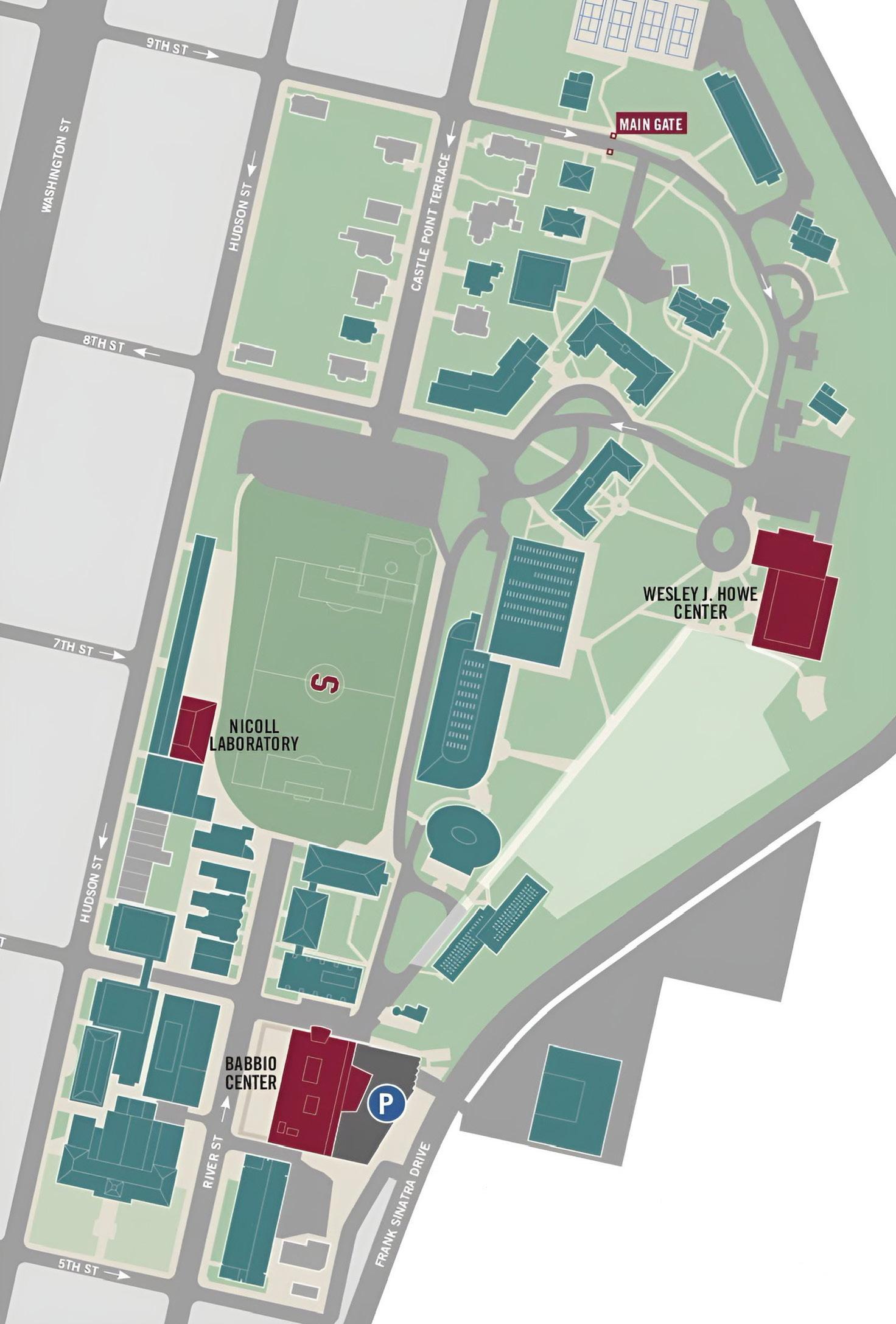
THE STUTE EDITORIAL Looking forward to it
Welcome back, Ducks, and happy new year! I hope you all had a restful winter break, and I wish you all good luck for the Spring 2023 semester.
This will likely be my last semester at Stevens, and will definitely be my last semester serving as the Editor in Chief of The Stute. Already, the feelings of confusion, excitement, anticipation, loneliness, and motivation are setting in. It’s quite strange seeing freshmen taking introductory classes and joining new clubs on campus knowing that we are at very different points in our lives. It’s also strange knowing that for the first time in my life, I have millions of possible choices and paths I can follow once I graduate. But I don’t want to bore you with my own existentialist thoughts about leaving Stevens, so they’ll be revisited at a later time. Rather, I want this editorial to focus on the new year, and setting up goals.
Possibly, 2022 was your best year; perhaps it was your worst. Or maybe it was drenched with mediocracy. Whatever 2022 may have brought you, the start of a new year seems to mark the start of a new “era” of your life. Often, the new year is riddled with phrases like “new year, new me,” “new year, new goals,” “new year, new attitude,” etc. The (seemingly ironic) sentence structure “new year, new ______” provides us with an easy way to set goals as broadly or specifically as we choose. And the concept of new year’s resolutions has been mocked and ridiculed as a goal or dream that we are meant to desert. This could be the reason why some goals are often abandoned, sometimes even by the end of January. There’s no blame to be placed for this because keeping up with goals is no easy feat; after a few weeks, we are once again met with the harsh realities of life and
MIND OF A FRESHMAN Back
at it again
made, it is important not to fall into the loop of regret. Instead, let those decisions be a stepping stone to a better, more experienced version of you. So, in the spirit of learning, here are three things that I have come to realize about college.
are reminded of obligations that can take priority over our goals. Sometimes, we’re so adamant about accomplishing a goal that it becomes a chore rather than an exciting change we want to implement in our lives.
Therefore, this year, I’m trying something different by reframing my goals into something I’m looking forward to doing instead of something I have to accomplish. Instead of just having a list of goals, I now have a list of my goals interwoven with exciting plans I have for myself in 2023. Specifically, there are plenty of things I’m looking forward to doing in 2023 — graduating, going on a Spring break trip with my best friends, reading more books, trying out new recipes, seeing Taylor Swift in concert, finishing up my projects as EIC, adventuring more in New York City, and working out more, to name a few.
Overall, this short, noncomprehensive list undoubtedly has me “looking forward” to 2023. While I cannot predict that this new method will help me accomplish anything and everything I set my mind to, I can certainly say that I am much more enthusiastic to keep up with my goals, especially because they seem more like plans I should be excited about rather than tasks I have to complete before the end of the year. So, if you’ve already let go of some goals one month into the new year, try reframing them (it can’t hurt). Goals don’t have to be something you hate doing. Even if they’re challenging and test the strength of your body or mind, you can still try to find some enjoyment in attempting to accomplish your goals.
I hope that 2023 brings everyone all that they’re looking for, and then some.
Sanjana Madhu ‘23 Editor-in-Chief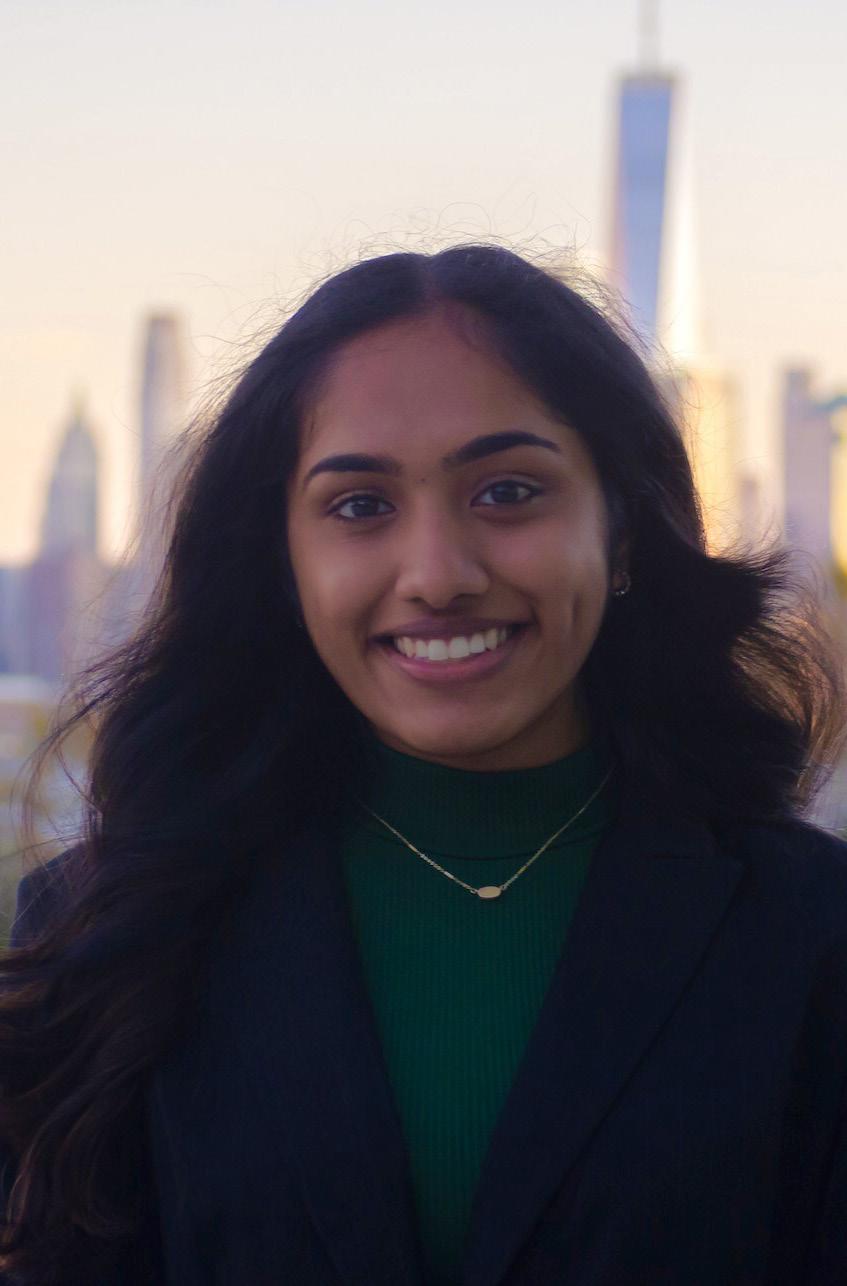
SENIORITIS Reflecting on winter break
BY TANISHKA KAPOOR ‘26As the rainy season and the low clouds mask this small city, we start round two of our first year at Stevens. The clouds may hang low, but I hope that we all start this new semester with high hopes. No matter how last semester may have turned out, this first month marks the beginning of new opportunities. We have not only learned about what it means to be in college, but we have also learned more about ourselves. How do we function without a sense of comfort? What drives us to accomplish things beyond just school work? As we trod carefully through these fresh (actually, probably polluted) waters last semester, we all may have made some mistakes along the way. It’s hard not to when you are thrown into an unfamiliar world with certain expectations of success. Regardless of the decisions we may have
The cavalry
BY OFF CENTER
The cries could be heard from near and far. All along the line, in the trenches, in the tunnels, and in the trees: students unable to maintain the delicate balance of work, academics, clubs, friends, sleep (optional), and whatever else it is kids get up to these days, falling before the march of the sands of time that wore down their resolve until they finally succumbed to the inexorable advance of the dunes of duty. The sand dunes here are of course a metaphor or the rest of this article would not make any sense. But over the grinding grit, a distant thunder could be heard. And it grew louder and louder, unlike any natural thunder whose sound dissipates quickly. Until, atop the crest of a decent
Firstly, the true meaning of independence. “Independence” is probably one of the first words that come to mind when describing the college experience. It’s freeing to realize that you are finally in control of your own life. However, there are so many moments when you yearn for a sense of dependency. Whether it’s looking for someone to listen to your rants or someone to make you feel cared for, living by yourself teaches you the importance of relationships with others. Sometimes it’s easier to take care of others than truly focus on yourself, but independence comes with the responsibility of understanding and acknowledging what you need and want, and that is probably one of the hardest things to do.
Secondly, what it means to know your limits. There are a lot of things that I want to accomplish during my years at college. Oftentimes, I even feel a little over-ambitious because of the expectations I put on
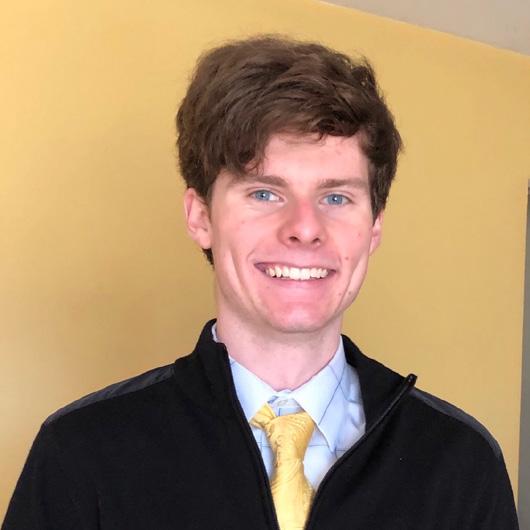
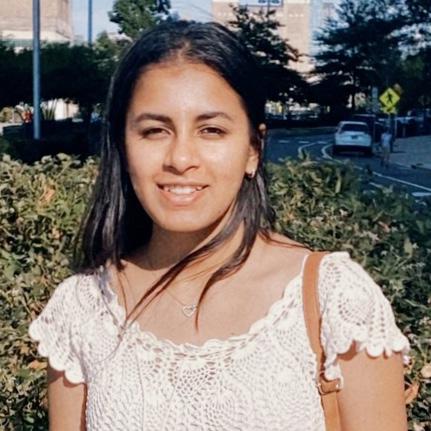
myself. So, I’ve come to realize that it is important to know how much I can accomplish within a certain amount of time. Without realizing this limit, you can get overwhelmed and constantly disappointed. In Albert Einstein’s words, “Once we accept our limits, we go beyond them.”
Lastly, the art of procrastination. I think we all have struggled with this at one point or another. For me, it’s probably all the time. Even writing this piece took way longer than it should have. This problem is something that I am still trying to find a solution to. I think sometimes you just have to sit down and convince yourself to “just do it.” Listen to Shia LaBeouf. As part of my CAL 103 final paper last semester, I learned that humans get a sort of dopamine rush when they complete something. So in order to feel satisfied, we should all just complete our work. I know it’s easier said than done, but we can all work on it together. We all make mistakes, what matters is whether or not we learn from them. So, to conclude this first opinion piece of the new semester, I wish you the best of luck for the new semester and hope you accomplish whatever you set your mind to :).
BY CHARLES BEALL ‘22“Winter is the time for comfort, for good food and warmth, for the touch of a friendly hand and for a talk beside the fire: it is time for home.” – Edith Sitwell I came back to Hoboken a week before the first day of classes, which gave me a chance to settle back in before the semester and reflect on my winter break. Before that, I had done more traveling than expected, being in my hometown for Christmas, on vacation a few days later, and in various parts of New Jersey to ring in the New Year with my girlfriend and some friends from Stevens.
It was great to see so many people—extended family members, close family friends, some of my old friends from high school, and people I’ve become close with during college–but I also felt a bit of unease through it all. I realized
it would be my last winter break as an undergrad, followed by my last semester before graduation. My conversations with various people about my plans and hopes for the future were a constant reminder of how close the future is.
For me, breaks can also be overwhelming in terms of the work waiting ahead once the time off ends. I know that this semester will still be busy, even though it’s my last, and since I’m close to graduating, everything will probably feel like more of a time crunch. I got a decent head start on work for the semester towards the end of the break, but that was difficult too, as I also wanted enough time to rest and spend quality time with others in a work-free setting.
In spite of all that, I did take a lot of positives from winter break, and I hope to remember them in the semester going forward. In some ways, it was nice having the same conversation about the future over and over again with the different people I saw. Every time, the other person offered words of support and encouragement – and sharing my story so much reminded me of the excitement I have for what’s next, even if it’s daunting.
Moreover, this break offered a nice prelude to the greater transition that will happen for me after this semester. I spent an equal amount of time between Hoboken and the town I grew up in, which showed me I’m more than capable of having multiple homes. As I hear back from the Ph.D. programs I applied to, I’ll know whether I’m going to have the chance to make a third home, but I’ve done it before, each time loving my community and being accepted for who I am. So, I am hopeful this third chance will also go well.
I always worry about writing this column as a sort of representative for my year, since my experience may be very different from another senior. I know, for instance, some people don’t like going back home for break, some people have a clearer picture of what they’re doing after graduation (huge congrats to them!), and some may feel more discouraged by the impending future. But regardless of how winter break was, I hope we can each cling to our homes (whatever home may look like), and our own positives and passions, as we begin one final wild and crazy semester.
hill, from a cloud of dust emerged galloping centuries of thoroughbreds carrying warriors wielding swords, guns, lances, and javelins.
Your friend who is very into Napoleonic history took a moment to note the similarities between this moment and the charge of the French 4th Hussars at the Battle of Friedland in 1807.
Rising in their stirrups, the soldiers struck back at the sand dunes (which will now turn into evil garden gnomes for the purpose of a sensical metaphor because stabbing sand dunes doesn’t do much). Javelins tipped with metaphorically useful concepts like “a healthy sleep schedule” and “a supportive group of friends” slayed gnomes on the right flank while a battering ram wielded by “reserving time
for hobbies” and “eating healthy” took control of the center of the battlefield. But, alas! On the left flank, the highly secretive and sneaky “self-doubt” unit of gnomes was advancing! Lurking in the shadows of the trees and bushes where the ground was too treacherous for the cavalry, they forced students into single combat where they would have to have the courage to believe in themselves.
Some shouted words of affirmation at the evil garden gnomes, leading to a perplexing scene of animated stone gnomes falling back before an invisible force as battle-scarred college students shouted “You’re doing a great job!” and “Your accomplishments are meaningful!” at them. Others banded together, forming
two and three-person teams to watch each others’ backs and come to each others’ aid when the outlook was bleak.
As the sun began to set and both sides retreated to their camps, it seemed the students had prevailed. But one final foe was lurking. As the water clock showed 11:30 p.m., the large canvas that mapped the battlefield showed a monster rearing its head. Its name was “final lab report” and it would be at the camp at 11:59 p.m.! There was no time to lose. Weary and worn students charged out of their barracks armed with quills and inkwells. As their energy came flowing back from the fog of near-sleep, rectangles began to rise from the ground and then line up with each other to form tables. Other zig zaggy lines descended
from the clouds to form useful figures as quill-wielding students raced to write captions and derivations. As the second digits (because no one has a watch with a second hand) ticked closer, it remained unclear if they could save the camp before 11:59 p.m., although they were grateful for the tactical error made by the lab report in announcing the exact timing of its plans. Just as the clock struck 11:58.57, the lab report was submitted and celebratory confetti rained from the sky.
This metaphorical medieval fantasy battle took place at the end of last semester. Off the Press was privileged to be allowed access to the site and we look forward to more conquests this semester.
SUSTAINABILITY
My approach to sustainability in 2023
Opinion
ADVICE TO BROKE COLLEGE STUDENTS Budget before you judge it
BY KATIE BLOOMER ‘25I welcome the new year with open arms. Fresh starts are one of my favorite things and setting unrealistic goals is also at the top of my list. Whenever I have a clean slate I think about every single thing I could be doing better from school-related topics to extracurriculars. Then, I decide I will do anything to reach perfection in those areas of my life. It is as if a new start will unlock a secret power, like not needing to sleep anymore, since that is the only way I could possibly accomplish everything involved in my dream life.
In some ways, I don’t think setting unreasonable goals is bad. It’s like that classic Pinterest quote, “if you shoot for the moon you will fall among the stars.”
Even if I fail at all of my goals, maybe they encouraged me to do a little bit better than I would have done otherwise. The key is not letting failure become debilitating.
You are probably wondering how this relates to
sustainability. In my case, a lot of my unrealistic goals often relate to low-waste living. In the past, I tried to become a vegetarian far before I was ready. Although I did end up eating meat before becoming fully successful, this goal did contribute to many meatless meals which otherwise might not have happened. Failure did not feel upsetting but instead made me see that I wasn’t ready and needed to grow a bit first. In the end, a few failed attempts helped me grow and eventually become a vegetarian.
This year, I impulsively set a goal to drastically increase my protein intake while remaining vegetarian and eating mostly healthy foods. That might not seem difficult, but I planned to consume over 100 grams of protein per day as a vegetarian with very little cooking ability and no interest in spending a lot of money on food. That is where things start to seem a bit more unlikely. In case you are wondering, that goal has not been successfully reached a single day this year.
When trying to reduce plastic use, it can be tempting to try and eliminate all waste and become zero waste. Unfortunately, making drastic sustainable changes is usually not successful long term. It can also result in being greenwashed when making rushed purchases and be -
ing a waste of money. Although I am all for setting lofty goals, this is one I am willing to skip over. Instead, I am trying to maintain the low-waste swaps I have already made.
A little over a year ago I saw a TikTok that talked about making an “I would be thrilled if…” list instead of typical resolutions. This list is things that seem somewhat unrealistic or are a step beyond what you think is possible for you. It goes back to what I mentioned about falling short of your goals but still accomplishing something amazing along the way. The unique phrasing is supposed to make it less upsetting if the things on the list don’t come true. My list involved things like writing a book, getting a 4.0, and getting a summer internship. Even though I didn’t write a book, I did get this opinion column which is pretty cool. I did not get a 4.0, but my grades were good. As for the last item, I got a paid sustainability internship at Stevens!
Anyway, if you made some goals for the new year, I wish you luck in trying to accomplish them or at least work towards self-improvement. If you didn’t set goals and want to, it is never too late to give yourself a clean slate. Most importantly, remember that it is okay to not be perfect and that even small progress should be celebrated.
BY HIMA THUMMALA ‘26Many high school students graduate financially illiterate, putting them at risk in today’s day and age. The weekly actions of an average civilian include writing checks, using credit and debit cards, and making trips to the bank—all of which college students should possess the capability to do. But some university attendees, especially underclassmen, are still reliant on their parents/guardians to be responsible for their finances. Because of this, it leads them to believe that they do not make their own financial decisions, but the truth is that they probably already are. For example, when students go shopping, whether it’s on Washington Street or at the Stevens BookStore, they are the ones who have the power to decide how they go about their purchases. They choose if they want to pay with cash or a card. They choose what they want to spend their money on. They choose whether or not something is worth its price. Hence, why they require financial knowledge to make the best
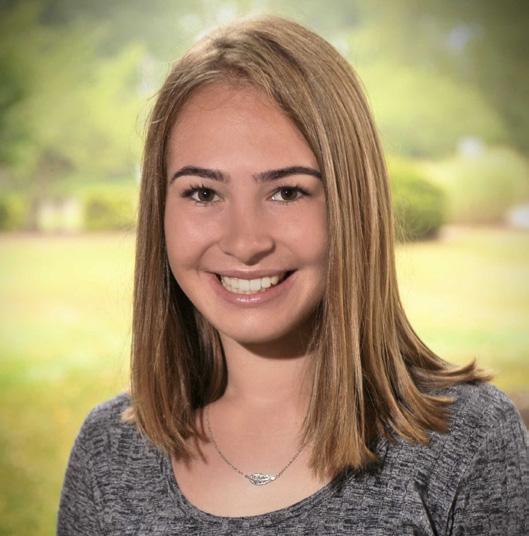
choice. One of the most effective ways to balance your money is to budget. Budgeting is when a certain amount of money is established for spending, but it is not surpassed. While mindlessly online shopping, many students will fall victim to making purchases on items they do not need, but rather ones they want. This is why it is imperative to focus on what money should or should not be spent on. If this is not followed, it would not be considered a budget. For example, when you are online shopping within your budget, you are faced with the decision of either purchasing a new phone, since yours has broken or a new jacket, even though you have a sufficient amount at home. You would rather spend your money on the jacket, but you should obviously choose the phone. This is the way a budget would work. You are forced to make logical decisions that will have the most beneficial results, all while staying under your budget limit.
Additionally, it is crucial that the set budget limit is effective. If you usually spend $100 while shopping for clothes but decide to cut back on expenses, you would increase how much money you save. So if you decide to spend $60, it would be considered an appropriate amount to purchase clothes for, while saving $40. However, it is vital to avoid setting it too low, as it could result in a lack of necessary
products since you don’t have enough money to purchase the adequate quantity. If you opt for buying cheaper items just because of their price, it could backfire and result in the product use time decreasing. Since this would lead to the item being bought more frequently, it would lead to more money being spent in a shorter time span, meaning that it would overall be counteractive as more money would be spent than saved. Making an investment in products that are worth it should well be considered while shopping on a budget.
There are also occasions when people may need to surpass their budget for certain necessities. This could occur due to a rise in the prices of groceries, the need for a new car, or a treat for an accomplishment. It is important to keep in mind that a budget should not be restricting you to make your life strenuous, but help you manage your finances and stop overspending when unneeded.
So the next time you catch yourself scrolling through Amazon and start contemplating buying something, ask yourself if it is a purchase that falls within your budget and/or will add to your life. If it is, then congratulations! You’ve got yourself a new delivery to be on the lookout for. But if it’s not, make a note of it for when your budget limit increases. Your future self will thank you for deciding not to splurge.
SCIENTIFIC
CURMUDGEON New Study Confirms Science Ending! (Or Not)
papers than ever. But what about the quality of these papers? How many reveal anything truly consequential?
BY JOHN HORGAN CAL PROFESSORI’ve always been obsessed with the limits of science. How far can science go? Can it keep giving us deep insights into nature forever, or will it eventually run into a wall? In my 1996 book The End of Science, I argued that we’re already hitting a wall. The era of profound discoveries is over.
My claim that science is ending seems nutty if you look at the sheer quantity of science. More scientists are churning out more research
A big new study in Nature addresses this question by examining 45 million papers published over the past six decades. Three scholars, led by economist Russell Funk of the University of Minnesota, find sharp declines in so-called “disruptive” research in biology, physics, social science and technology. The authors distinguish “disruptive” papers from those that merely build upon or “consolidate” previous knowledge. Citations of disruptive papers are less likely to cite earlier research, presumably because they render it obsolete.
An analysis of 3.9 million patents produced similar results. Papers and patents “are increasingly less likely to break with the past in
NOT FINANCIAL TIMES (NFT)
ways that push science and technology in new directions,” the authors conclude. This study corroborates others showing declines in science’s productivity.
The End of Science focuses on “pure” science, which yields insights into nature, rather than applied science, which gives us new technologies and medicine. The Nature authors do not distinguish pure from applied science. But their distinction between “disruptive” and consolidating science is useful. It reminds me of Thomas Kuhn’s distinction between revolutionary and normal science. Revolutionary science challenges the prevailing paradigm, or status quo, whereas normal merely extends it.
In The End of Science, I argue that science has entered a period of permanent normality; there will be no more insights into
nature as revolutionary as the theory of evolution, the double helix, quantum mechanics, relativity and the big bang. Why not? Because these profound discoveries are true. Put them together, and they form a map of reality that, like our maps of the Earth, is unlikely to undergo significant changes. Science, in other words, is a victim of its own success.
The Nature authors cite The End of Science but reject its thesis. They note that “science and technology do not appear to have reached the end of the ‘endless frontier.’” Science still produces disruptive advances, they argue, albeit at a diminished rate compared to total research. As examples of “highly disruptive work,” they cite the detection of gravitational waves seven years ago and the recent development of covid vaccines.
But these examples sup -
port my argument that science is no longer revolutionary. Einstein predicted gravitational waves a century ago. And while I’m grateful for covid vaccines, they are an application of work in molecular biology dating back to the discovery of the double helix in 1953. In other words, neither example is remotely revolutionary. A news story on the new Nature study says “no one knows” why disruptive science has “plummeted over the last half century.”
Actually, the Nature scholars cautiously blame the decline of disruptive science on the increasing competitiveness of science, which is leading to an emphasis on quantity over quality. To counter this trend, universities and funding agencies should give researchers more time to “step outside the fray, inoculate themselves from the publish or
Microsoft increasing stake in OpenAI’s ChatGPT
hind the chatbot ChatGPT. Rumored amounts in the range of $10 Billion have been proposed, yet no specific figure has emerged yet.
BY JOSEPH AMES ‘22Beginning in early January, there were whispers of Microsoft investing a significant amount in OpenAI — the company be -
Backing up a bit, OpenAI was founded in 2015 by a collection of Sam Altman, Elon Musk, Peter Thiel, Reid Hoffman, and Jessica Livingston amongst others.
Their initial investment — totaling a valuation of $1 Billion, eventually enabled OpenAI’s first product, OpenAI Gym, a toolkit for developing and comparing reinforcement learning al-
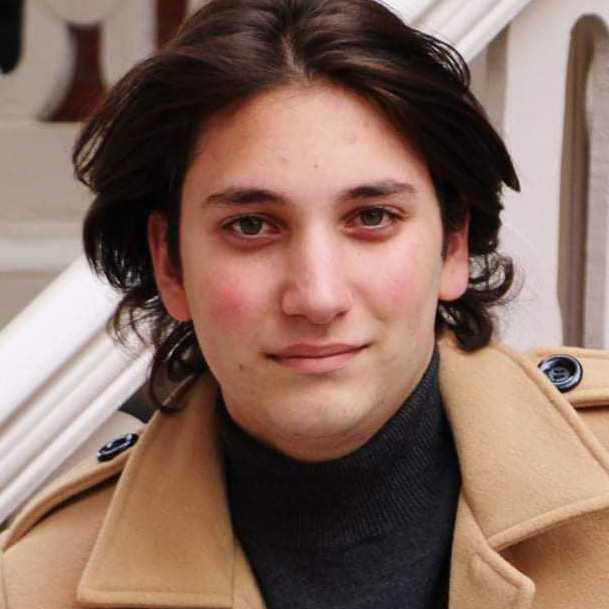
gorithms — a subfield of machine learning focused on how agents can learn to achieve goals in uncertain environments.
Following this, OpenAI achieved other advances, such as being the first one to beat the world champions in an esports game back in 2019, securing a $1 Billion investment from Microsoft in July of that year, and training neural networks in a robotic hand to solve a Rubik’s Cube using their OpenAI Five plus Automatic Domain Randomization (ADR).
The biggest advancement, however, launched at the end of November 2022 — their ChatGPT prototype. While there are certainly limitations to the program, it still has been able to write college-level essays, generate intricate Python code, and even pass a Wharton MB course. The limitations come in the form of its nature; it simply knows everything and nothing at the same time. ChatGPT recognizes patterns and cannot create anything technically new or original, as explained
well by Dave Vellange in his Silicon Angle podcast. This means that ChatGPT’s AI is only as strong as the database put behind it, which continues to grow as more people put it to use.
So why would Microsoft invest in a product that seems like a glorified version of chatbots on sales websites? Not just because it has the money to, but because OpenAI and ChatGPT have the potential to revolutionize the software industry. Beginning with growth, the market share for AI is projected
perish culture, and produce more truly consequential work.” Admirable goals, but do they have any chance of being implemented?
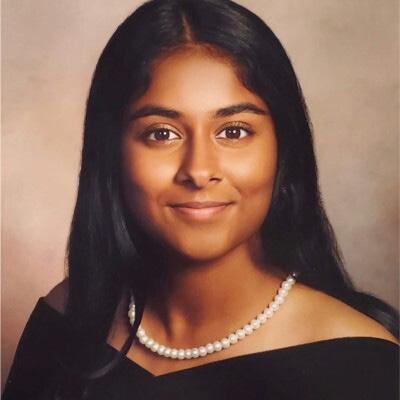
Ironically, I’m less pessimistic than I used to be about science’s future, mainly because I’ve spent the last two-plus years studying quantum mechanics. The more I learn about the theory, the less sense it makes. The vast edifice of modern physics, which rests on quantum physics, seems wobbly, unstable, ripe for a revolution. Perhaps quantum computing will catalyze this revolution. Let’s hope that the bursting of the tech bubble doesn’t take quantum computing down with it.
John Horgan directs the Stevens Center for Science Writings. This column is adapted from one posted on https://www.johnhorgan. org/blog.
to grow at a compound annual growth rate (CAGR) of 38.1% from 2022 to 2030. Capitalizing on this could be huge for Microsoft in separating itself from competitors such as Google in the search engine and digital advertising space. Overall, the best way to summarize the impact of ChatGPT is from SiliconAngle on Amara’s Law: “Very often we overestimate the impact of something in the short term and underestimate the impact of it in the long term.”
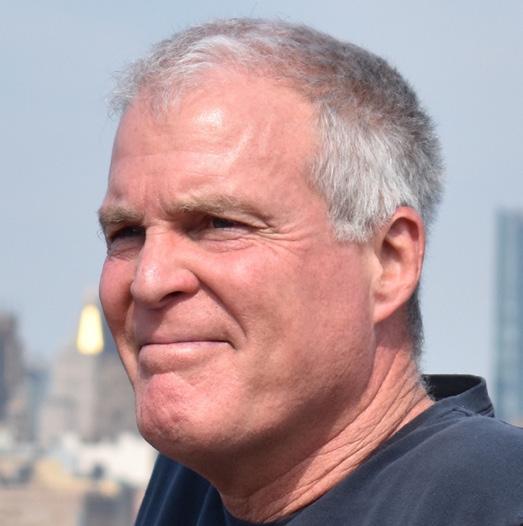
ARTIST SPOTLIGHT Huang Yongyu
BY ITAI GELLER ‘26For this issue’s artist, I chose Huang Yongyu, a Chinese contemporary and expressionist artist who is best known for his ink paintings, caricatures, and sculptures. Yongyu is a cel-
ebrated artist who has held multiple solo exhibitions and has been featured in countless collections, including one that was held in New York’s Metropolitan Museum of Art. Yongyu was born in China’s Hunan Province in 1924 and gained inspiration for many of his artworks from his home county, Fenhuang. Although Yongyu never acquired a traditional artistic education, he became the youngest teacher at the Central Academy of Fine Arts in 1950. By this time, he had already shifted away from the traditional style of woodblock
SPOILER ALERT The Whale
printing and converted to freehand ink paintings which generally depicted different animals, landscapes, and human figures. Even at age 98, Yongyu has continued to create prints to this day and even recently designed the China Post’s 2023 Lunar New Year Rabbit stamp.
One of my favorite works by Yongyu is Lotus and Bird , an expressionist freehand ink painting that depicts an egret flying through what appears to be a marsh. The most distinctive elements of the piece are the egret and the lotus flowers in the foreground. These are excellently defined, as the warm scarlet of the lotus and the bright white of the egret contrast well with the darkness of the background. I also enjoy how expressive the background is. Rather than clearly defining the shapes in the background, Yongyu uses wet black ink to create a negative space to represent other objects, allowing the foreground elements to shine through. He also used an ink wash for the marsh instead of creating a solid body of water. These aspects make the piece seem more three-dimensional, and help better define other foreground elements, such as the tall grass.
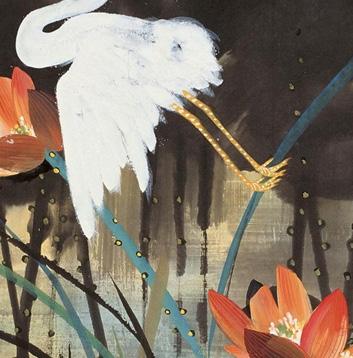
BOOK OF THE WEEK
BY COLE GARDELLA ‘24Everyone loves a good comeback story. The journey one takes from setback to comeback can often provide inspiration and hope for those also going through difficult times. So when Brendan Fraser, who
is perhaps most well known for his performance as Rick O’Connell in The Mummy trilogy, was announced to be playing Charlie in a film adaptation of Samuel D.
Hunter’s play The Whale his first major role in a film in roughly a decade—many people, including myself, were very interested to see what he could do. So, I saw the film over winter break, and it is easily one of, if not my favorite, movies of 2022.
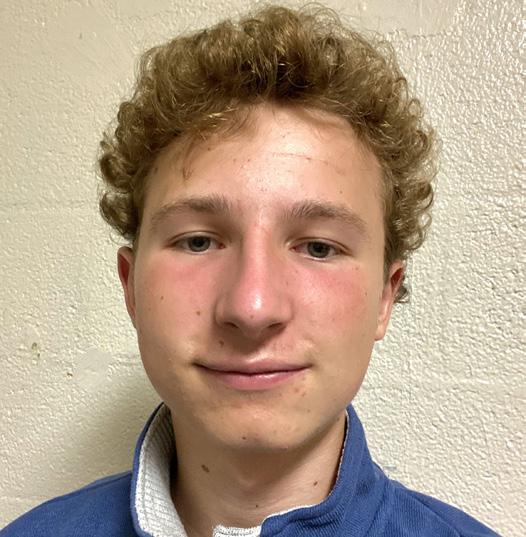
Directed by Darren Aronofsky, The Whale tells the story of Charlie, a morbidly obese online college professor who keeps his camera turned off out
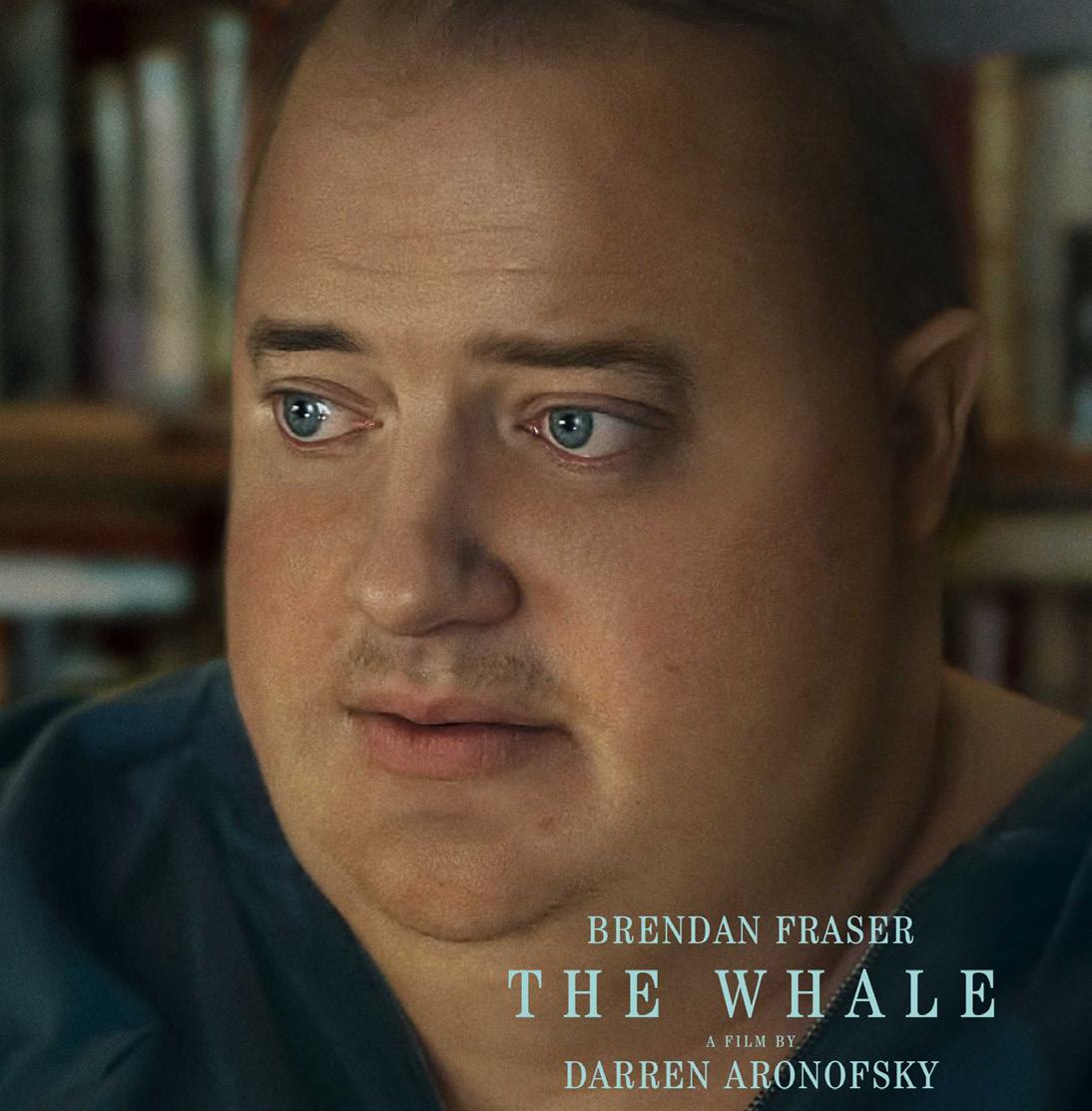
of fear of showing his appearance to his students. Charlie’s rapidly declining health due to his obesity motivates him to reconnect with his estranged daughter, played by Sadie Sink.

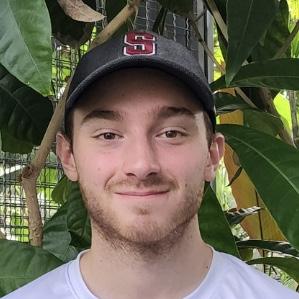
As you can likely gather from that brief description, this is not a movie that will leave you feeling warm and fuzzy inside. However, that is by no means a criticism of this film. Although the subject matter of the film is extremely heavy, the performances of both Fraser and the supporting cast make it difficult to keep your eyes off the screen for long.
In particular, Fraser’s performance in The Whale is one of the greatest I have seen in a long time, and it earned him a six-minute standing ovation at the 79th Venice International Film Festival. Charlie is not an easy character to play on paper, as he makes a lot of questionable decisions in his life, but it’s clear that his heart is in the right place. Despite this, Fraser portrays Charlie’s complexities in a way that makes you feel sympathetic toward him, and his line delivery is straight-up gut-wrenching at times. The Whale is one of those movies that can truly be described as an experience, and I think it’s something that everyone should see.
Demon Copperhead, by Barbara Kingsolver
BY VICTORIA YASHCHUK ‘26As much as I love writing about and analyzing books, no amount of words will be sufficient to fully grasp the dark beauty of Demon Copperhead, by Barbara Kingsolver. With Demon Copperhead, however, it is best to warn readers that this book will make you develop such an attachment to it that it becomes palpable.
COMIC CORNER
Aiming higher than just describing the difficult life of a boy in Lee County, Virginia, Kingsolver captures the darkness of poverty, domestic abuse, the foster care system, and opioid addiction, along with the prejudice of living in rural America, being known as a “hillbilly.” The story of Damon Fields, known as Demon Copperhead because of his copper-colored hair, is one of being forced to mature and survive with a constant nagging reminder that he is unwanted.
Kingsolver introduces Demon as a fatherless, emotionally hurt 11-year-old boy living with his young mom in a trailer. Demon is way ahead of his time for an 11-year-old, having to ensure and maintain his
mom’s sobriety, because his mom is still a child at heart, as she was a victim of abuse while in foster care as a child. Demon’s best friend, Maggot Peggot, along with his family, helps raise Demon as they treat him as one of their own. In fact, Mrs. Peggot assisted with Demon’s birth in the trailer, claiming that Demon will never drown since he was born in his amniotic sac. With his father dying before he was born, Demon did not know much about who his father was, but he knew his father died at a place called Devil’s Bathtub. The only thing Demon has from his father is his looks, being a tall young man with copper-colored hair and green eyes. Along with his looks, Demon also has a grand-
mother, Miss Betsy (the mother of his late father) who wanted to take him away at birth and disappeared shortly afterward, according to Demon’s mom. Demon’s introduction is sad yet sweet, but the plot takes a dark turn as Demon is abused by his mom’s new boyfriend, Stoner. The palpable tension destroys whatever Demon knew as his childhood, that being his mom after she overdosed. After such a traumatizing event, the rest of the novel portrays Demon’s difficult path, falling victim to abuse in foster care and meeting people who took advantage of and manipulated him, drifting apart from the Peggots, and being forced to fend for himself. It is worth noting that Demon
Upon semesters return by Vitek Sabath
also made very few friends, one of whom was Tommy, who helped Demon from emotionally crashing. After going through multiple fosters, Demon decides to run away and find Miss Betsy, his grandmother, from his late father’s side. Finding Miss Betsy was the best thing Demon could have ever done, as finding her led to Demon living with and meeting the people that had the best and most significant impact on his life–Aunt Jane, Coach Winfield, Angus, Annie, and Mr. Armstrong. Every character helped Demon transform into the man he always wanted to be, until he fell into an opioid addiction after getting together with his girlfriend, Dori. It is important to note
how every character had their own trauma, but each played an important role in helping Demon, before, during, or after Demon’s addiction. The novel is realistic fiction, and Demon displays the beauty yet ugliness of the world, bringing light to the real world and the abuse it inflicts onto those in the foster care system, victims of domestic abuse, and drug addiction. Demon was a beautiful representation of real-world brutality and emotional pain, as he goes from hopefulness to being emotionally lost and self-loathing. The real thing that Demon was addicted to was the light and happiness that he knew was out there, and that is the addiction every heartbroken victim has and strives to obtain.
DEAR CLAIRE AND ETHAN...
Q: How do I get motivation back after the break?
BY CLAIRE HANNAN ‘24Welcome back from break everyone! I hope that all our readers had a restful break and are ready to kick off the semester strong. But if we’re being realistic, most of you are probably feeling
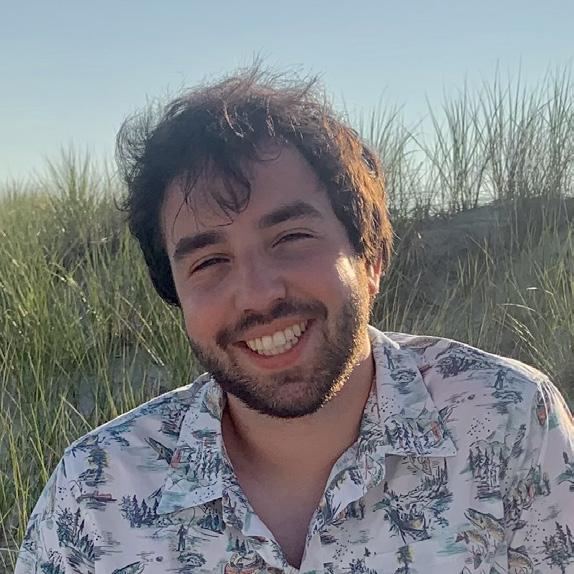 LIFESTYLE HACKS
LIFESTYLE HACKS
Back again
a bit foggy and unmotivated about going back to classes. Sometimes it can feel like we’re stuck in an endless loop semester after semester. I know that for me, the return to school in the Spring semester can be particularly painful. The combination of bad weather, short days, and recent memories of last semester’s finals makes it hard to get excited about my new classes. I think the best thing you can do in this situation is to remember that this won’t go on forever, every semester we start and finish is one semester closer to being done with college. Although it is hard to get invested in a new
wave of classes, remember why you’re doing this. I like to go back and think about the goals I had going into freshman year and how excited I would have been to see how far I’ve come since then. Ultimately, things will get better soon. The weather will warm up, the spring semester will fly past, and we’ll find ourselves once again in summer able to take a full break. We only go to college once and it’s very unlikely that we’ll ever experience an environment or opportunities like this ever again so try to enjoy it while it lasts and don’t forget to leave some time to have fun.
BY ETHAN KLESCHINSKY ‘24From personal experience, it is almost impossible to gain motivation back after the break. For example, my writing for this column was due three hours ago, and I am still not thrilled to be doing it. Your best bet is to pray the semester treats you right because otherwise, you are in danger. The semester will always start off sluggish, but sometimes in the Spring it just does not get better. I hope you had an enjoyable winter break because there is very little enjoyment you are going to receive from this semester. I really wish I had a better answer
HISTORY OF THE DUCKS
BY ZOE HACK ‘24While my winter break wasn’t entirely restful (especially considering my last final was over at 4 p.m. on December 22), I really cherished all the moments I was able to spend without having a pile of work to do. But what meant the most to me, is the time I was able to spend with my family, both immediate and extended. Personally, I always struggle with the transition from Hoboken to home or vice versa. While I miss my family dearly now, it has also been really great to reconnect with all my friends at school these past few days. If I’m being honest, sometimes balancing relationships while I’m busy can be just as difficult as balancing all my schoolwork for me. While I’m still trying to work on a solid schedule where I call my mom every week, I do at least have a pretty good handle on managing my coursework.
While the “in-season” of classes is generally the same from semester to semester, it is important to go into each semester with somewhat of a clean slate as far as expectations go. Because different
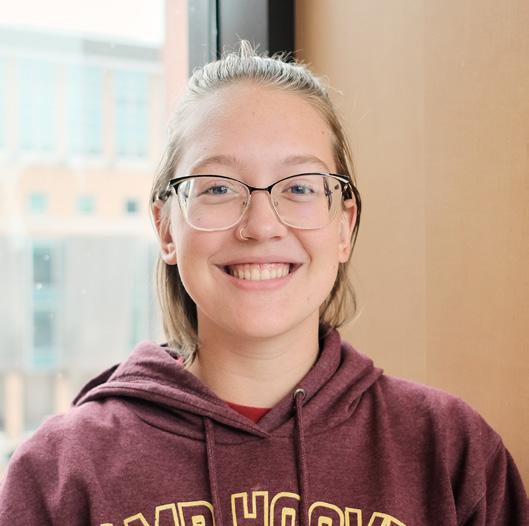
courses cover different topics and material, it is unreasonable to have a mentality of “well last semester was this way, so this semester should be the same.” Personally, last semester wasn’t my favorite because I didn’t really enjoy my major-specific courses as they covered topics not relevant to my intended career outcome. However, for this semester, I am constantly reminding myself that last semester does not define what this semester will be like and that the classes I am taking now are not at all related to any classes that I’ve disliked in the past, so any previous semester doesn’t really have anything to do with my success, happiness, or learning outcomes this semester.
As always, I am staying mindful of my studying techniques and making adjustments for different courses as needed. (Tons more about my different study techniques on thestute.com/category/opinion/ lifestyle-hacks.) So far, after only having been to each of my classes once, I have already revised my in-class note-taking techniques to best fit my needs for this semester. I always find that a more in-depth note-taking/ study tactic needs to be used for classes where the material doesn’t come as easily to me as it does for others. Even though sometimes it feels discouraging to need to rework my methods, in the long run, it allows me to better retain learning material and knowledge.
Honestly, one of my biggest recommendations is investing in an iPad and Apple Pencil. I found that for all of my classes this semester, it is what I’ll be using since they’re all delivered via slides, so with the iPad I can annotate right on the document. I don’t have a fancy iPad, just whatever the regular one is (I think mine is 8th generation), and with the Apple Pencil, it came to be around $350. I was previously under the impression that buying an iPad would be closer to $1000, so if you were in the same boat, I would say it’s definitely something to reconsider.
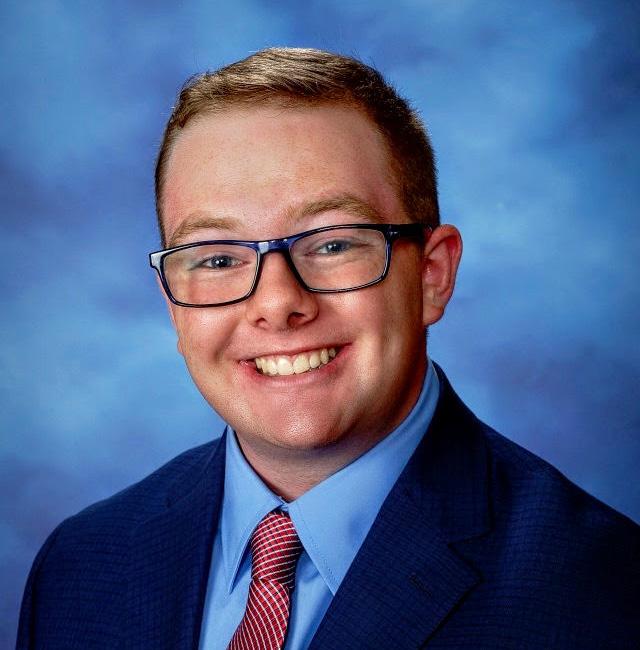
While school and classes are obviously important, I think it equally (maybe even more) important to also focus on enjoying these four (or five) years in college and really taking advantage of all the opportunities campus has to offer. The main thing I’m talking about here is investing in relationships, whether they be friendships or professional relationships. College is one of the easiest times to make friends since everyone is going through a similar shared experience as well as a good time to network for the future with both students and professors. While focusing on school is great, make sure to also have a strong focus on becoming involved on campus and meeting new people. Enjoying your time and investing in personal relationships in college can be just as important in the long run as academics.
to give you, but sometimes you have to play with the hand you are dealt. Your best bet is to try to spend the better part of this semester doing things that you enjoy. If you aren’t having fun in your spare time, this semester will really be miserable for you. My best and most serious advice is to try to enjoy your free time while you have it. Join a club or play a sport to try to make your evenings after class count while the semester picks up and you begin to fall behind. The best thing you can do is try to keep a positive attitude. Good luck!
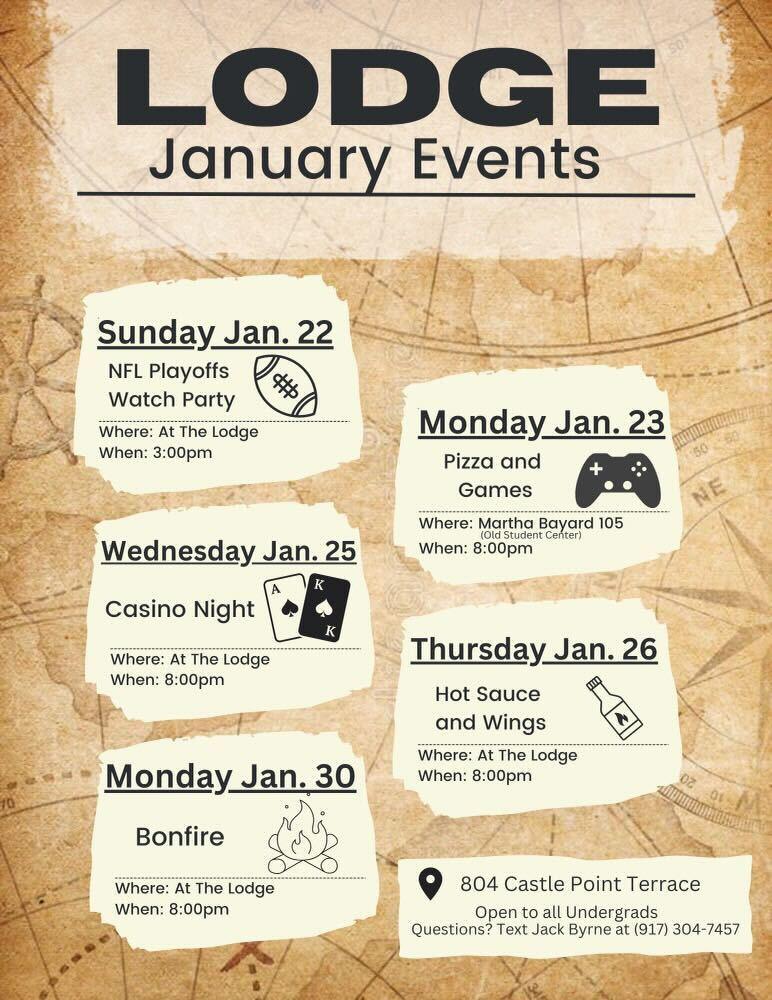
Castle on the hill: the story of Castle Stevens
ed a similar grandeur–a greenhouse, root cellar, and port by the Hudson–all connected through tunnels.
BY EVAN PAPAGEORGE ‘26The history of Stevens often refers to a building that adorned Castle Point for decades but no longer stands: Castle Stevens. Castle Stevens was the pinnacle of the Stevens family estate and the Stevens campus. Sadly, Castle Stevens fell to the wrecking ball in 1959 to allow for the erection of a 13-story student-faculty center, now the Wesley J. Howe Center. The history of Castle Stevens and its demolition for a new, modern student center is somewhat controversial: many opposed and protested its destruction in the late 1950s, worked on an attempt to restore the deteriorating building, and have since fought to keep the Victorian edifice from being forgotten.
John Stevens (17491838), the patriarch of the Stevens family, built the ‘Great Villa on the Hudson’ as a home for his family. Tragedy struck in 1851 when a fire destroyed the Stevens home. In 1853, John Stevens’ son, Robert Livingston Stevens, erected a 40-room manor known as ‘Castle Stevens.’ The new Italianate villa with clear allusions to Victorian architectural styles included beautiful crystal chandeliers, rich wood ornaments, and a 60foot high dome topped with a sparkling stained-glass skylight. The grounds boast-
When Robert Stevens passed away in 1856, the land fell to his brother, Edwin Augustus Stevens. When Edwin passed in 1868, he left a clause in his will; he gave land, a $150,000 building fund, and a $500,000 endowment for a university.
In 1870, the Stevens Institute of Technology opened with a rigorous engineering curriculum culminating in a baccalaureate named “Mechanical Engineering,” the first of its kind. Edwin’s wife, Martha Bayard Stevens, lived in Castle Stevens until she died in 1899. Her son, also named Edwin A. Stevens, and his family lived there too.
The Stevens family lived in the castle until Alumni Day: May 27, 1911. The school, which shared a name with the family, purchased the land and villa with a grand celebration as the day’s events included a dinner, concert, and dance. The school transformed the castle into a student, faculty, and graduates center of living, learning, and festivity. For decades, the villa remained a cornerstone of the university and hosted many dances, graduations, and dinners. The castle was even occupied as barracks during World War II as Stevens served as a training center for future naval officers.
In 1951, money was set aside by the Stevens’ fund to restore the castle. The hope was that the restoration would rejuvenate the structure to house students, staff, and graduates.
Additionally, in 1954 on the 100th anniversary of Castle Stevens, the school dedicated a plaque to celebrate the
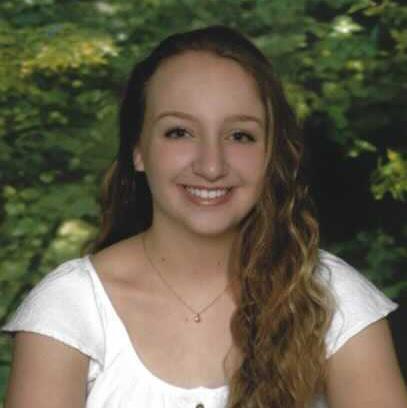
great history of the building. In 1958, work on the castle finished, leaving hope that Castle Stevens would last long into the future. To the dismay of many, this turned out not to be the case.
In June of 1959, the Stevens Institute of Technology Board of Trustees announced the demolition and replacement of Castle Stevens with a modern, 13-story student-faculty center. According to the Director of Development and Public Relations, Edwin B. Stearns Jr., the castle needed a $100,000 renovation and would need $30,000 per year to maintain. Additionally, Castle Stevens needed more facilities, space, and innovation to keep up with the rapidly growing university. The Stute worked tirelessly campaigning for the oldest building on campus–the structure representing the history and glory of the Stevens family and the university. Sadly, efforts were fruitless as Castle Stevens was demolished in December 1959.
Castle Stevens was a beacon of innovation and history across centuries of the Stevens family and the university. Although many opposed its demolition, it led the way for the Wesley J. Howe Center and a revolution of new facilities and innovations that shaped the school into what it is today. So as you walk past the Howe Center, visit the Office of Undergraduate Academics on the 9th floor, or enjoy a meal in Pierce Dining Hall or the Pierce Café, remember the history of the beautiful castle that once stood there and the legacy that you hold as a Stevens student.
I’m going to be 100% honest, you really don’t. I could end my column there but I am obligated to hit my word count of approximately 250 to make the column fit in the print.
ROVING REPORTER
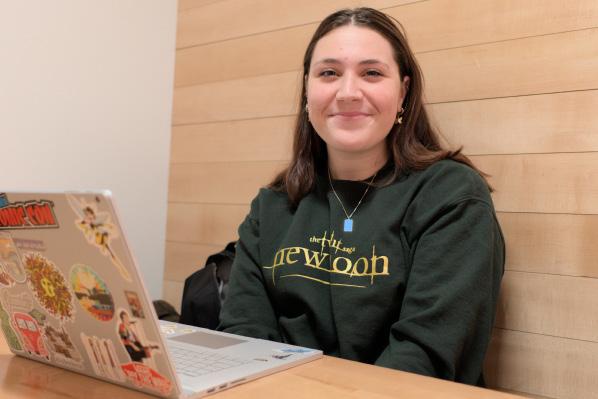
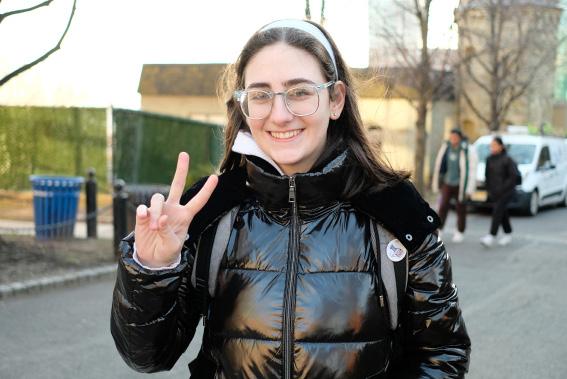
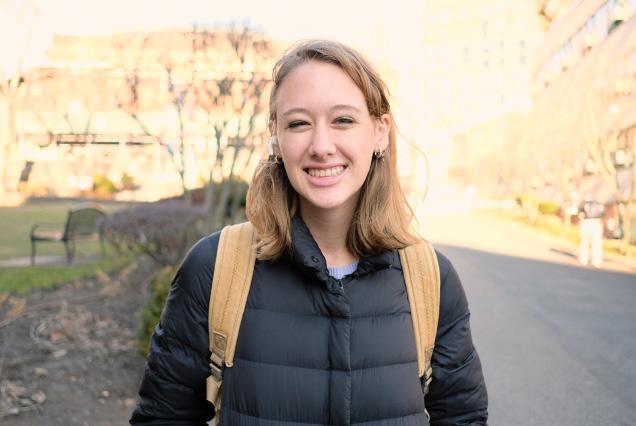
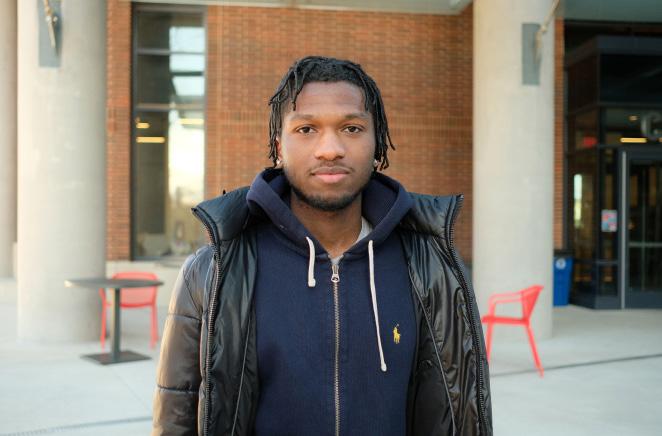

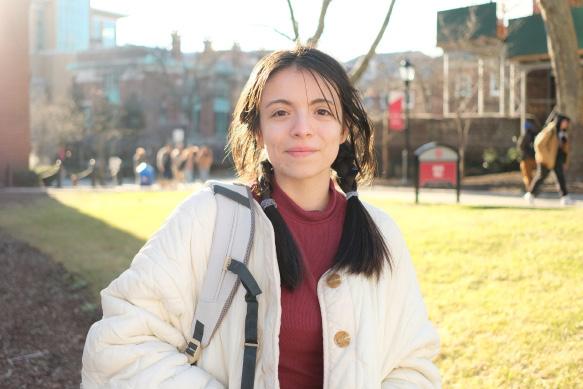
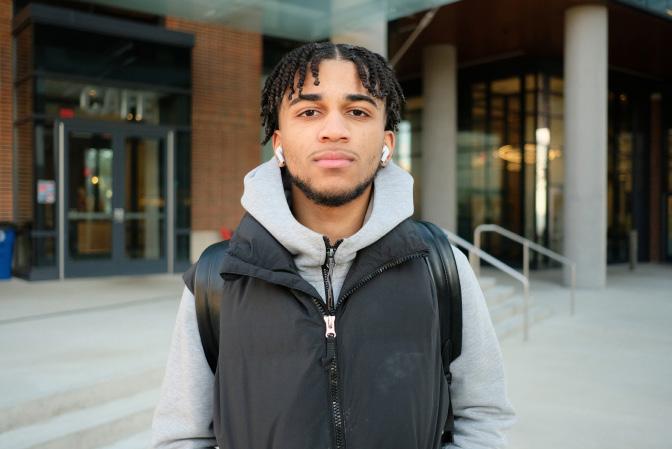 By Rafael Lee Li
By Rafael Lee Li
was your New Year’s Resolution?”
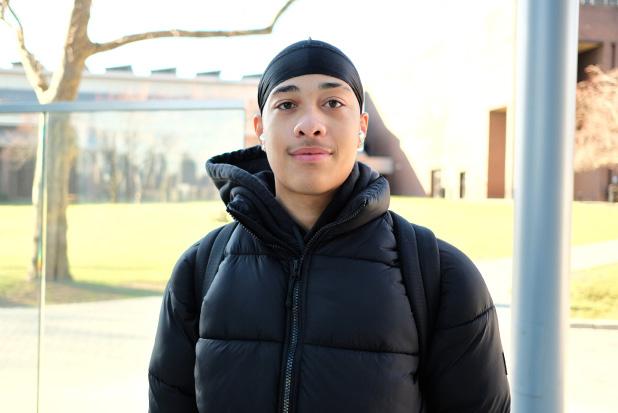
“What
